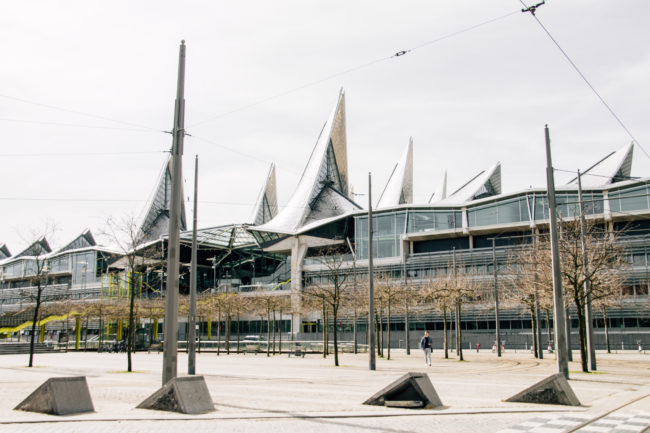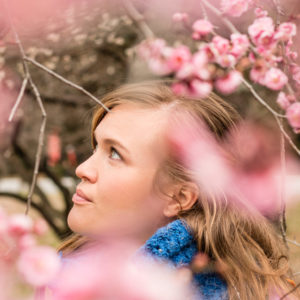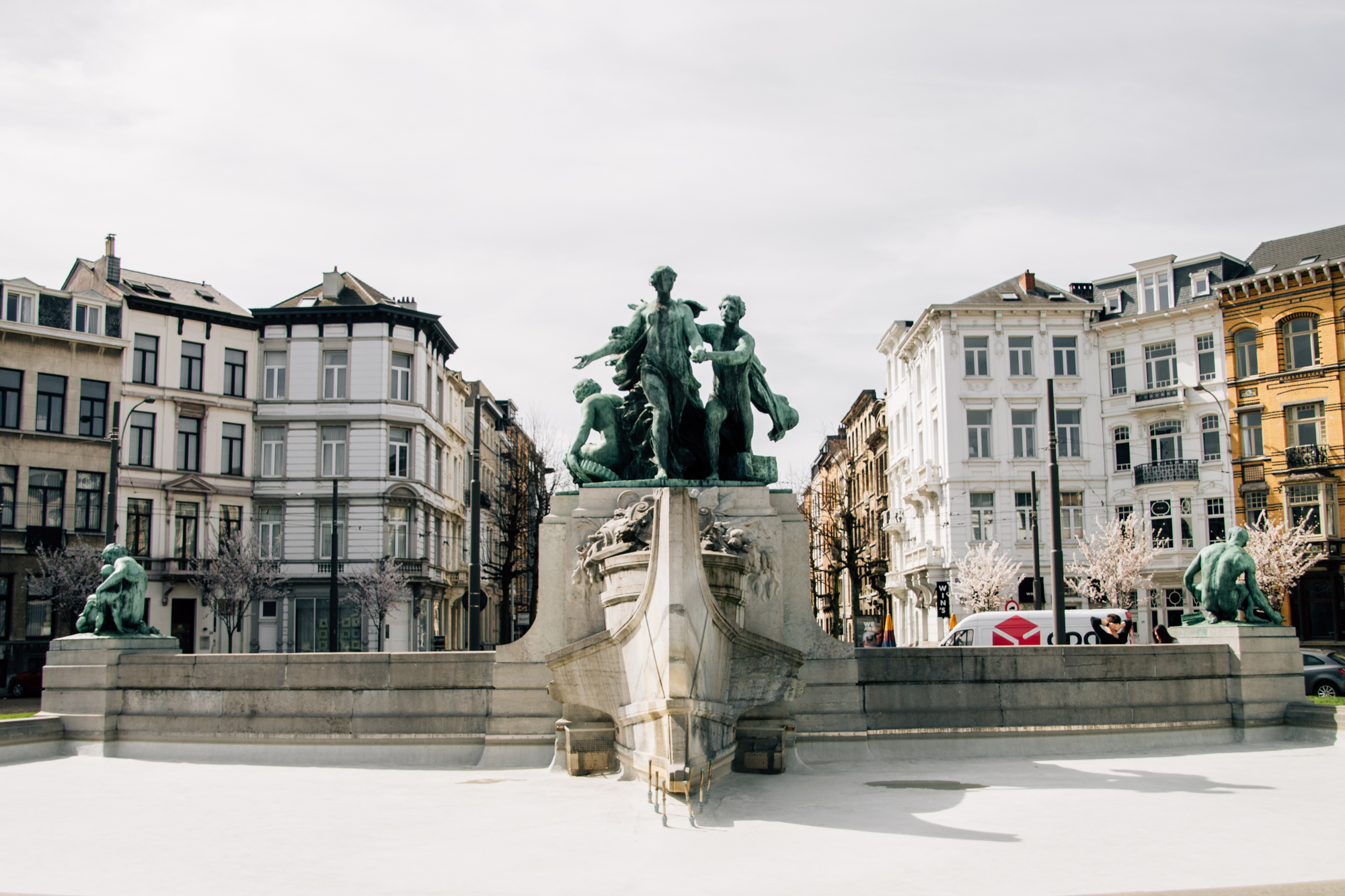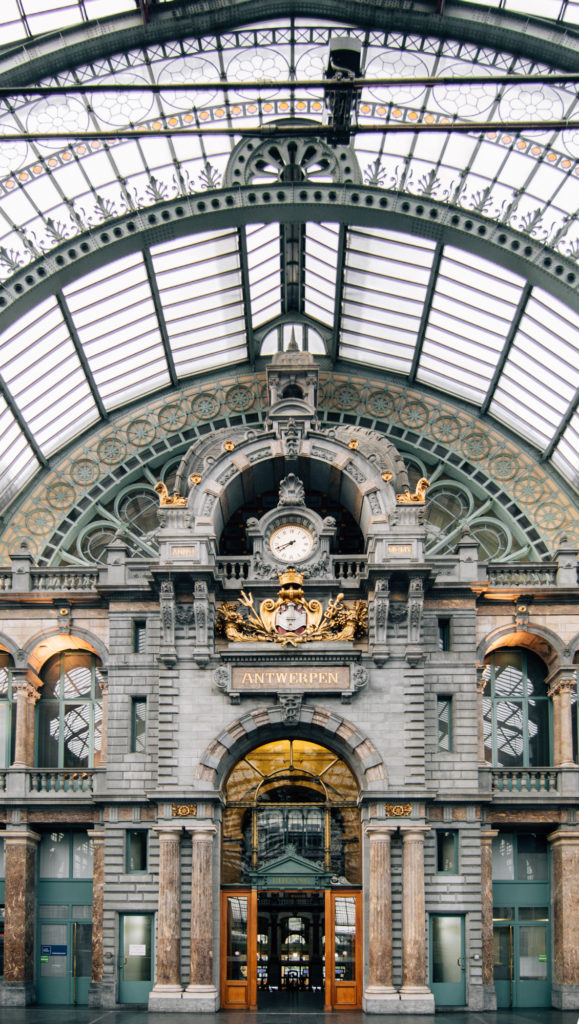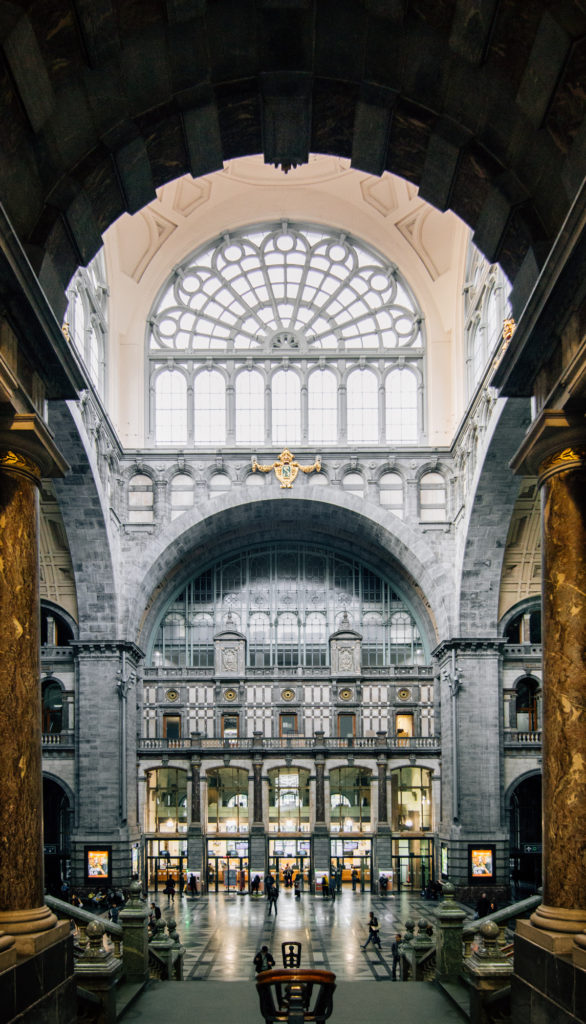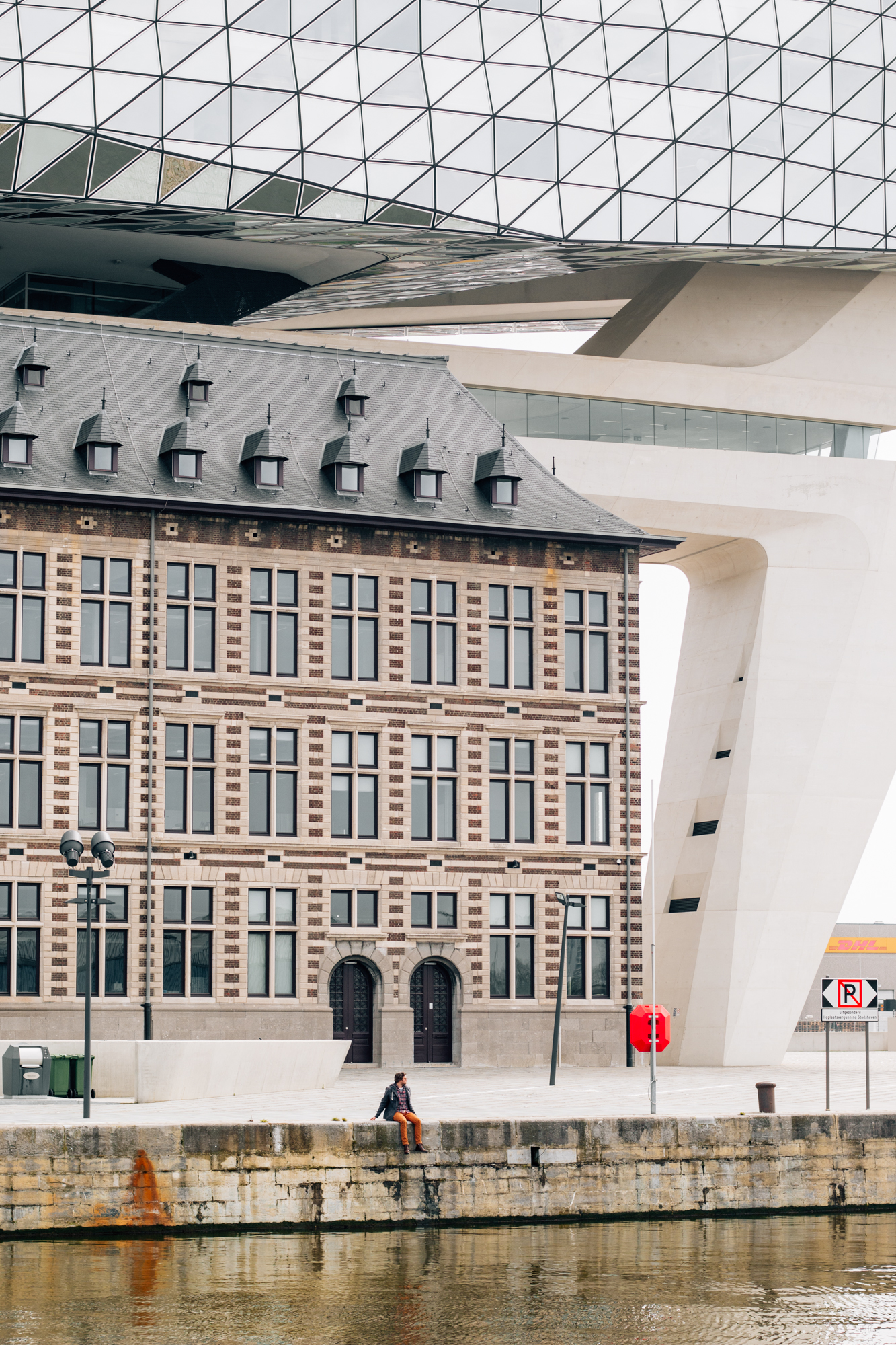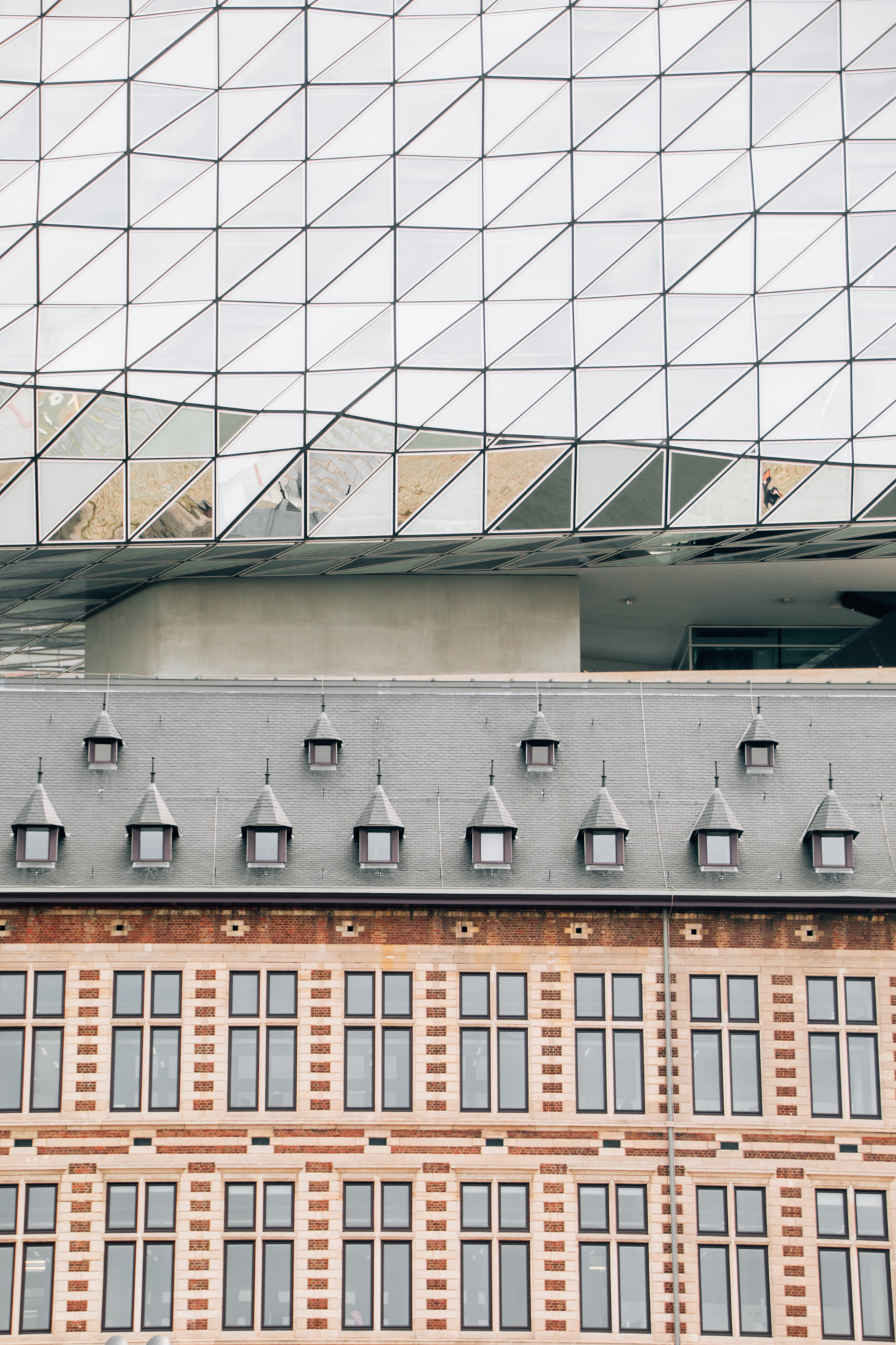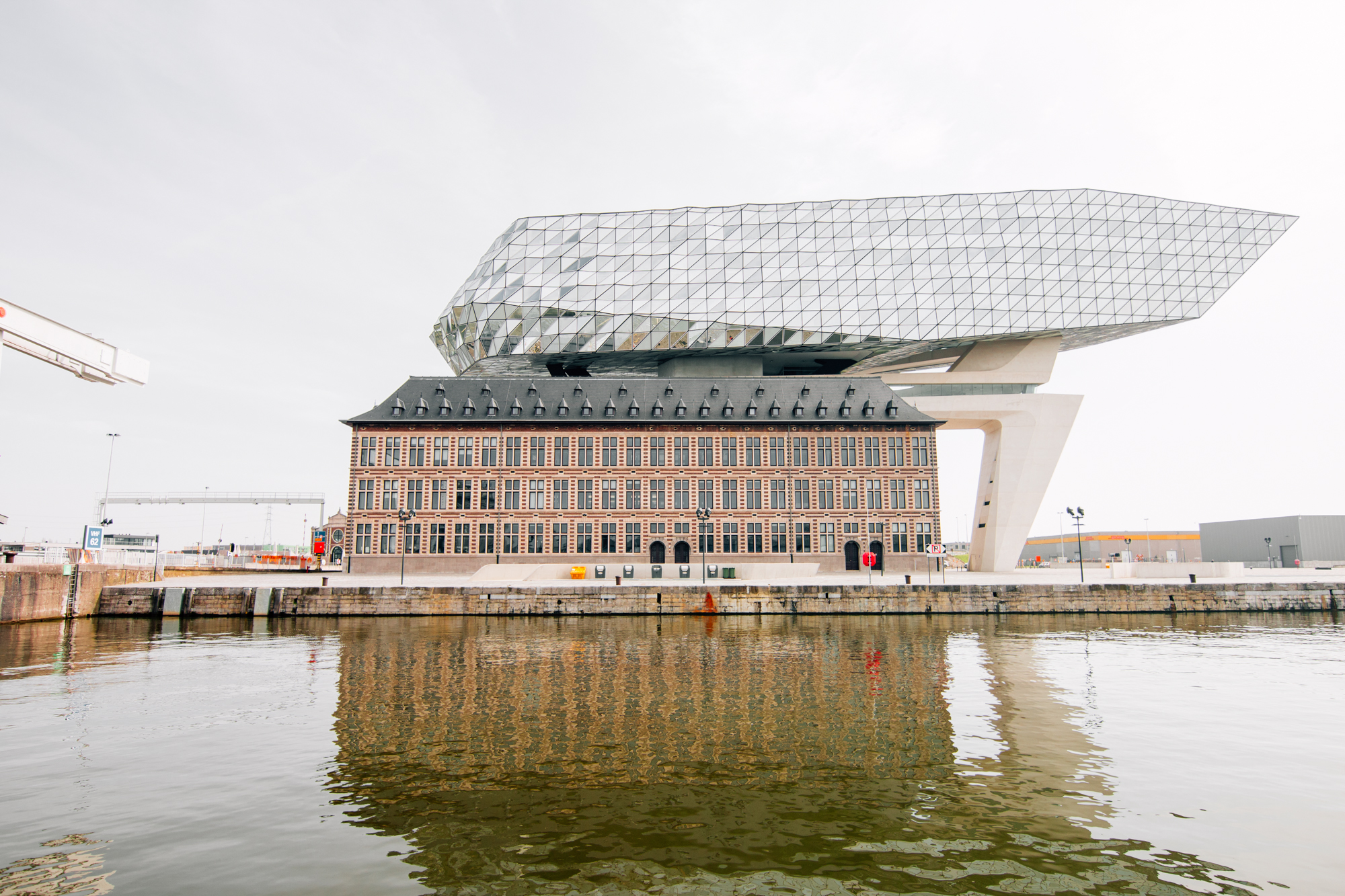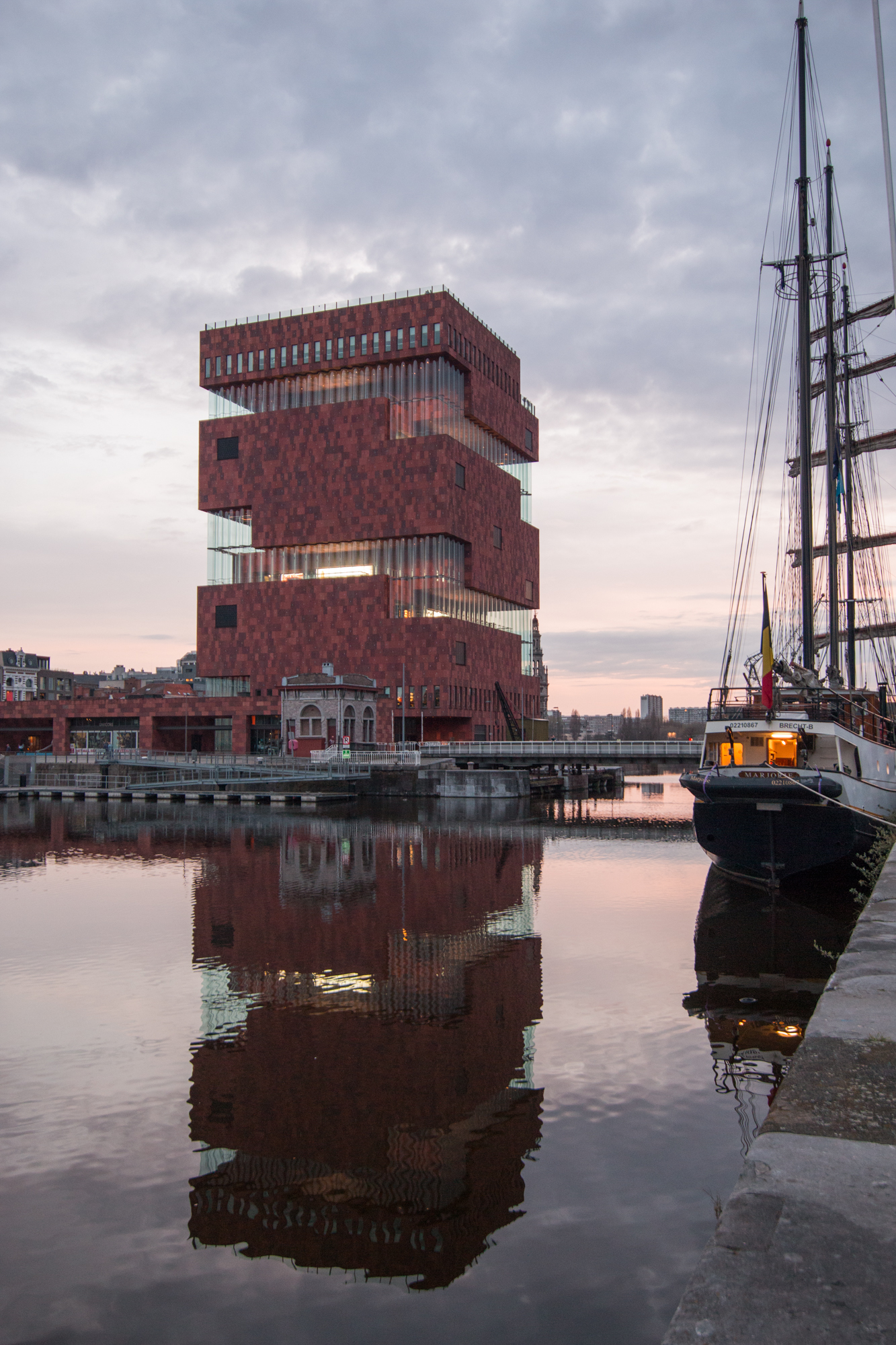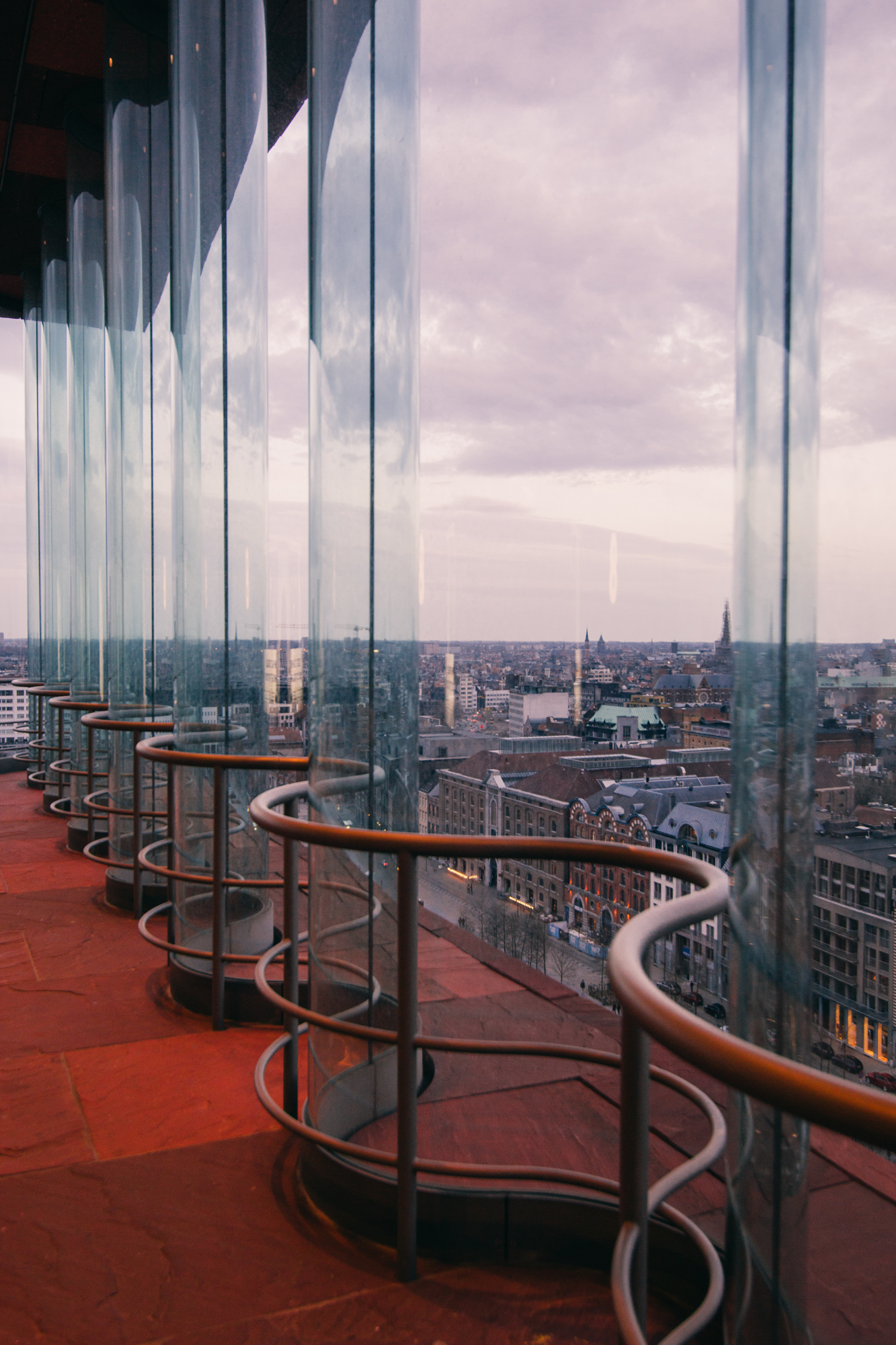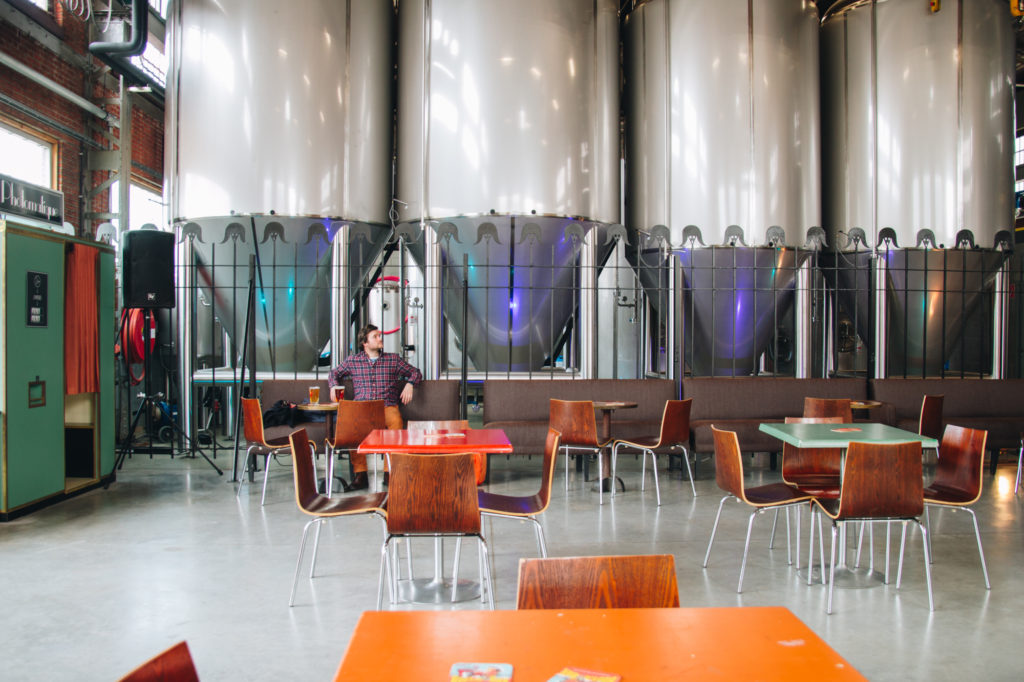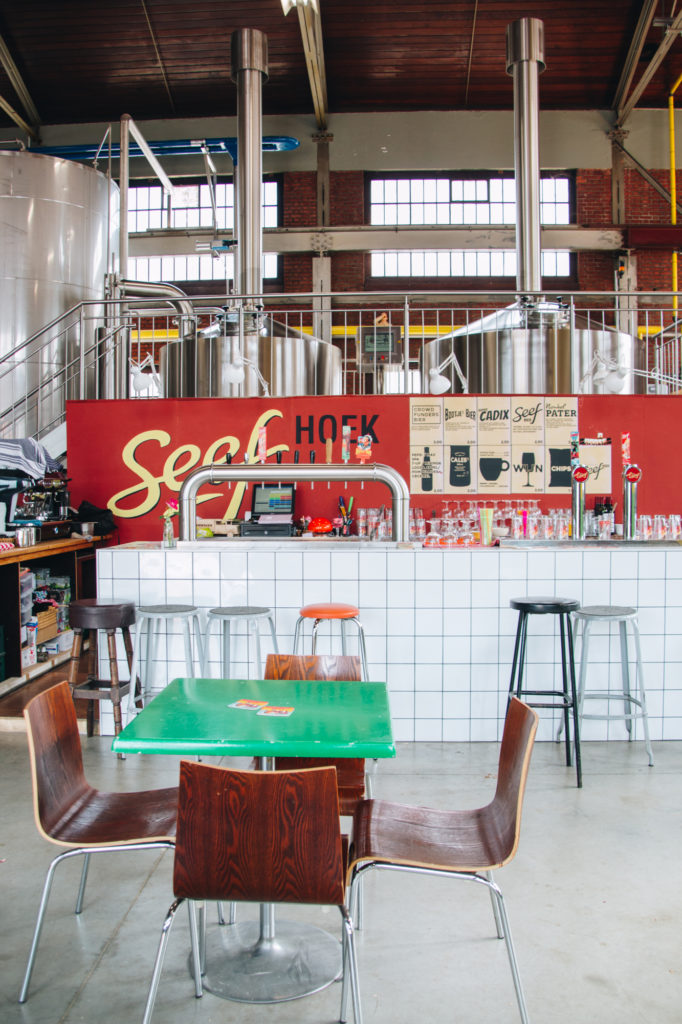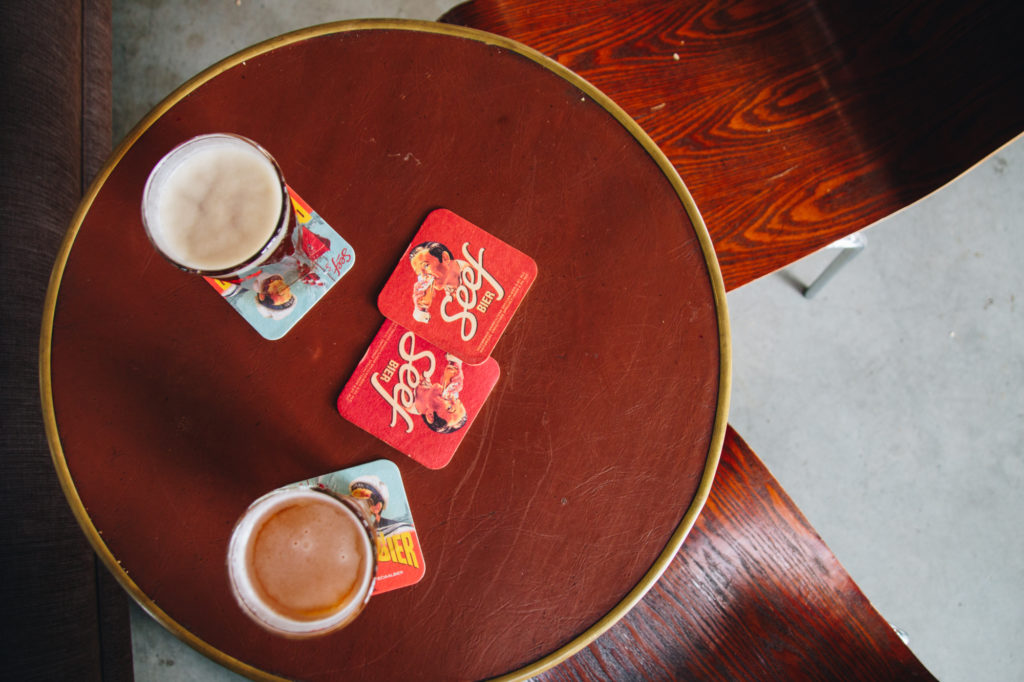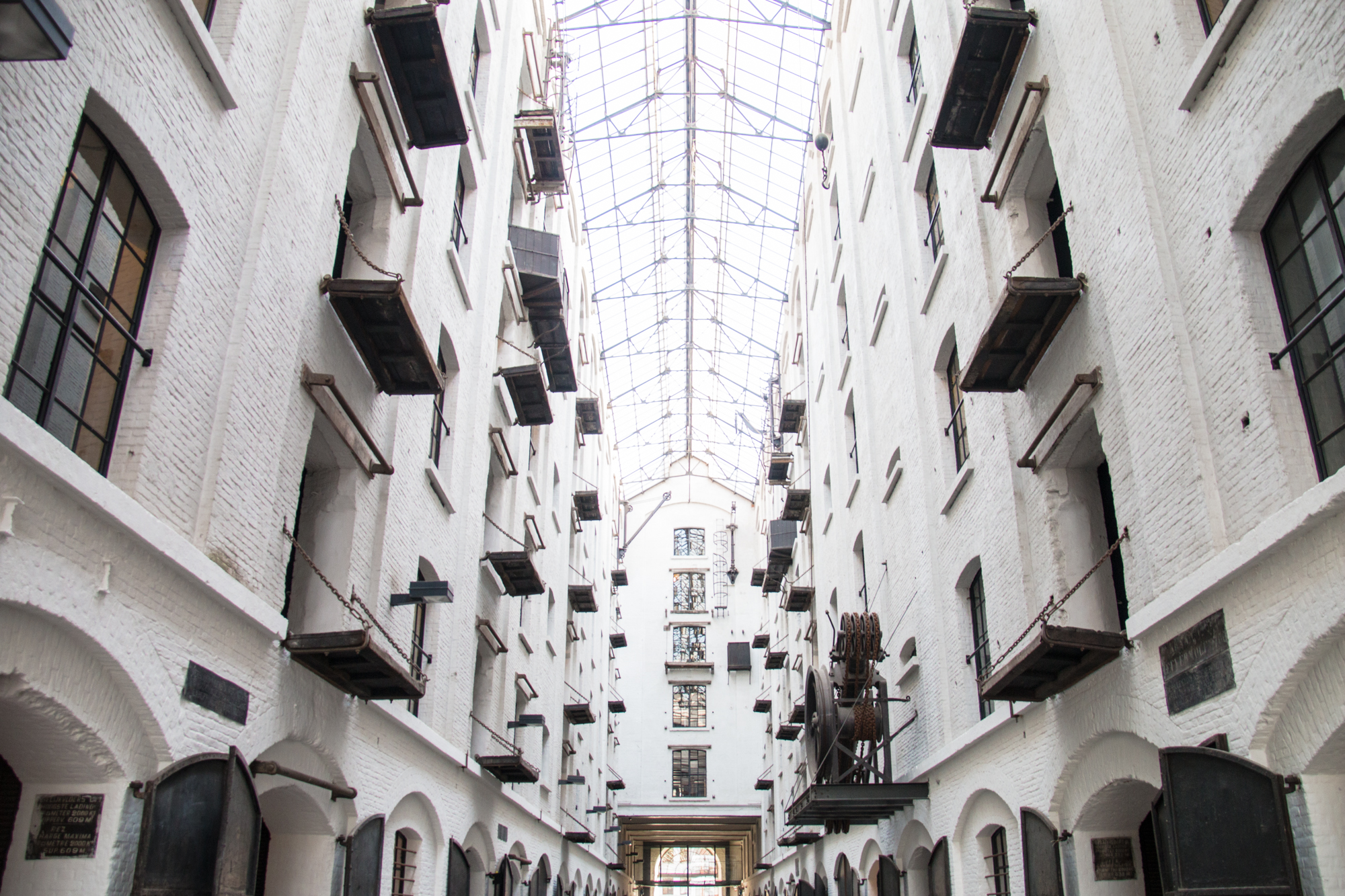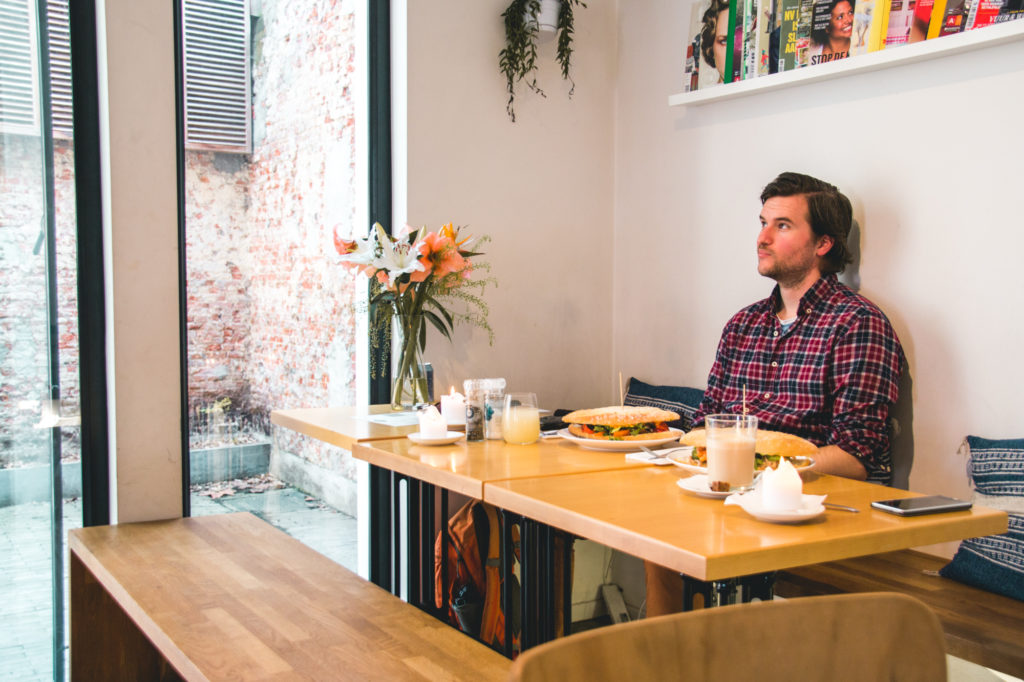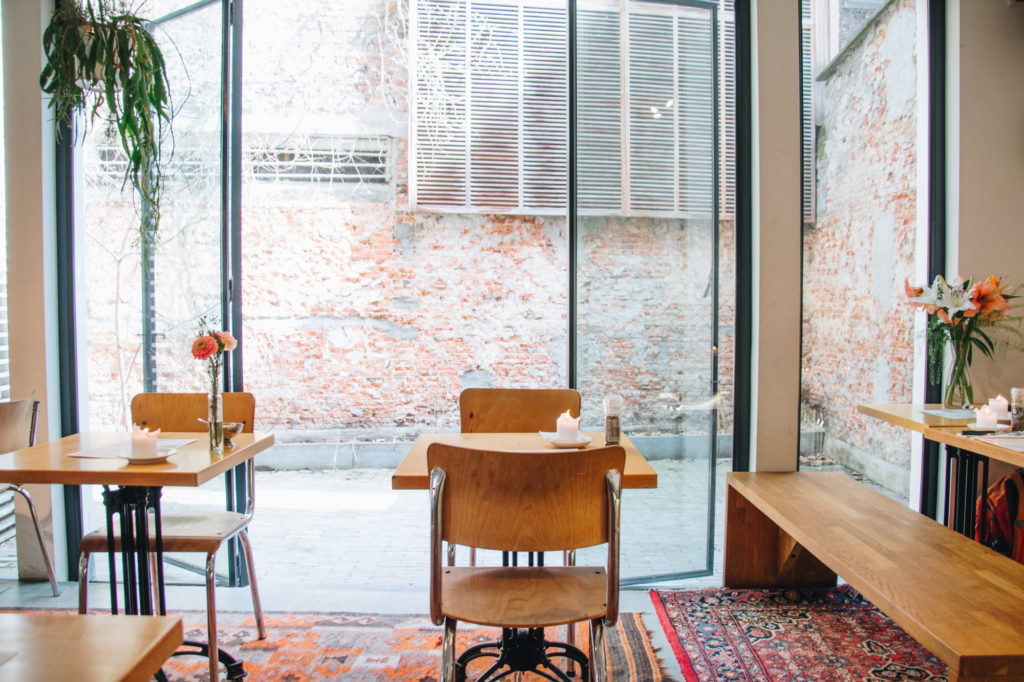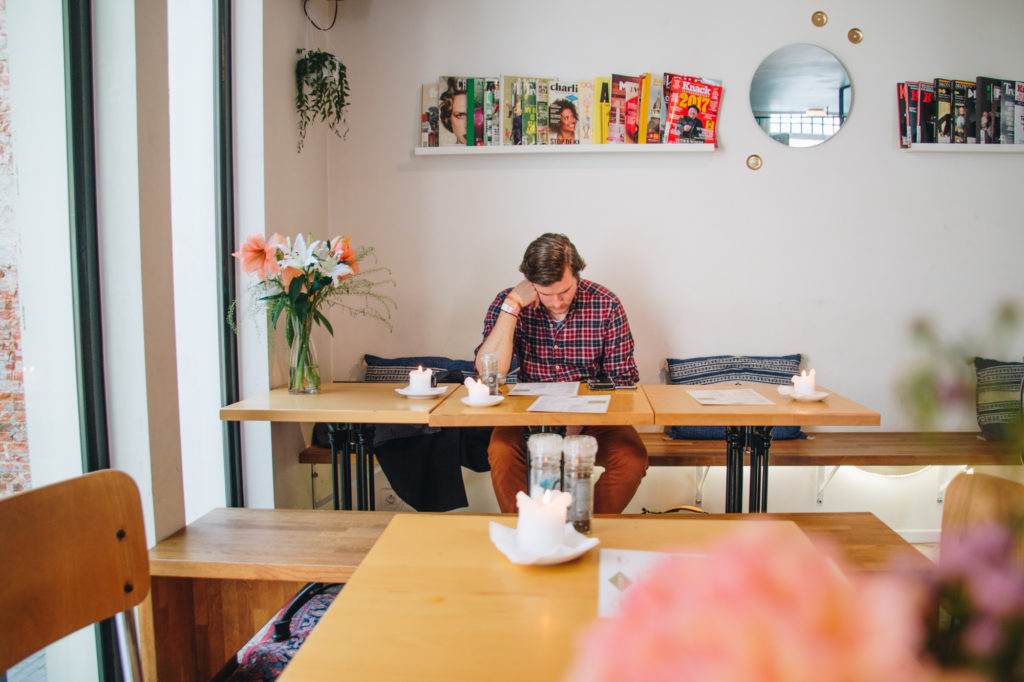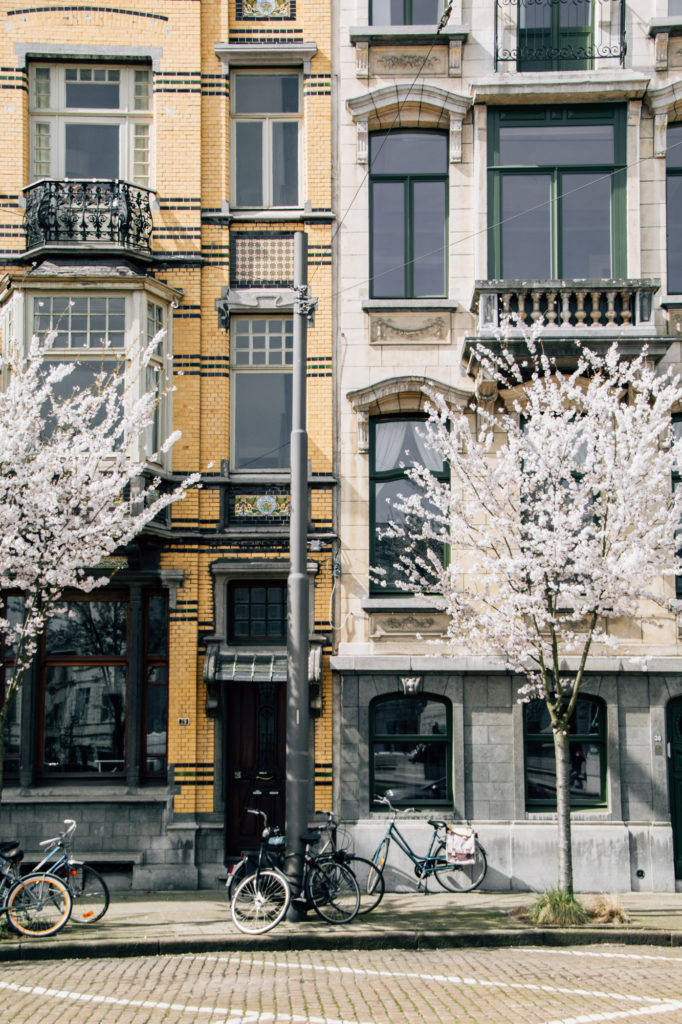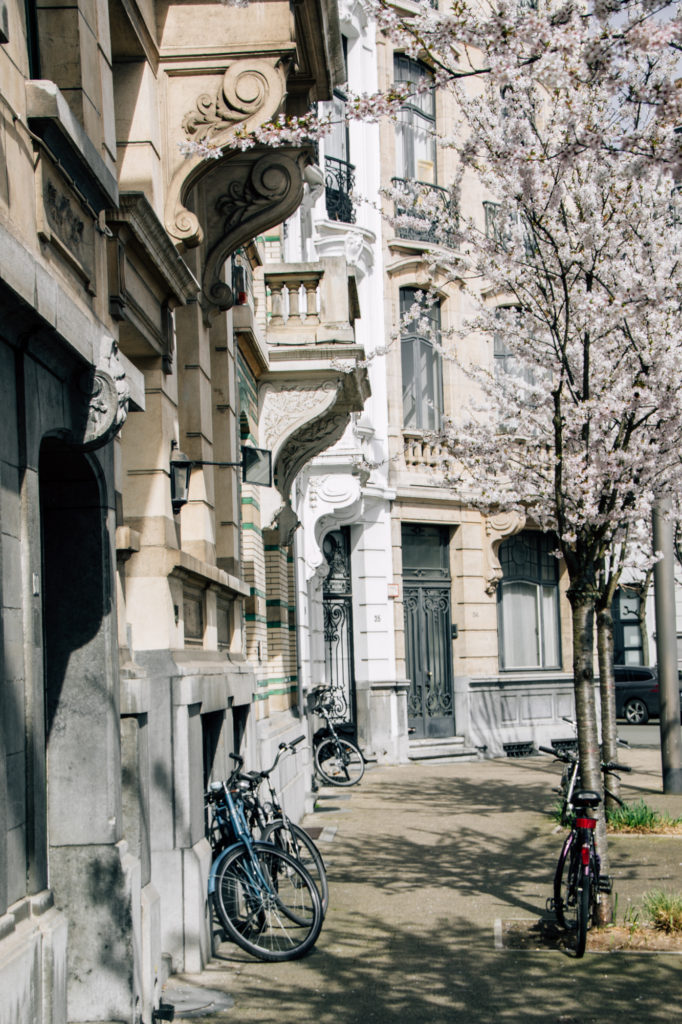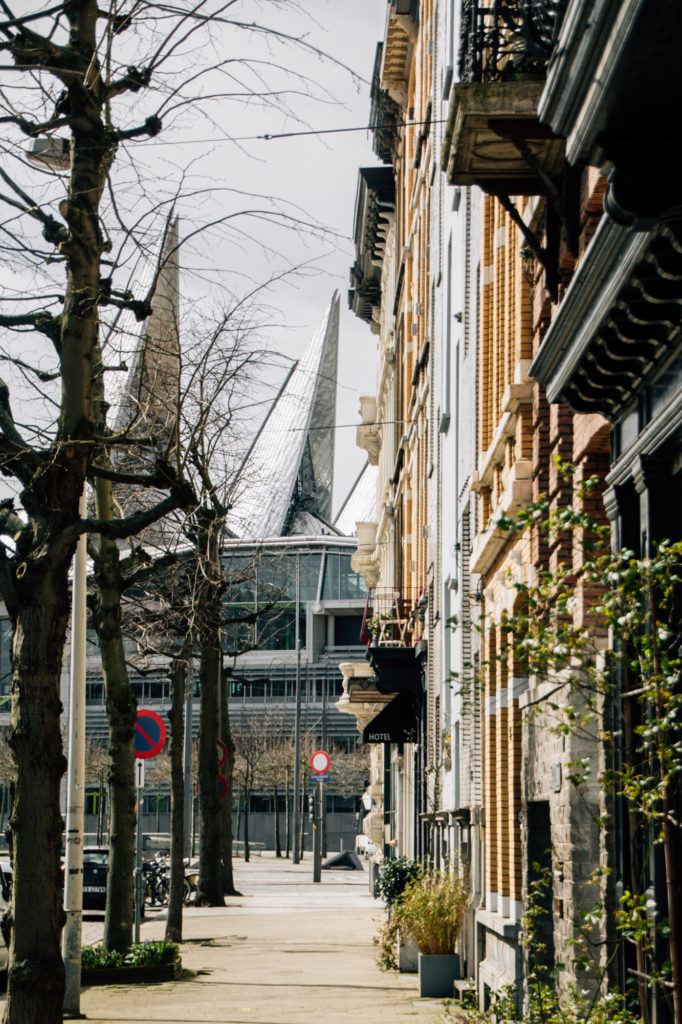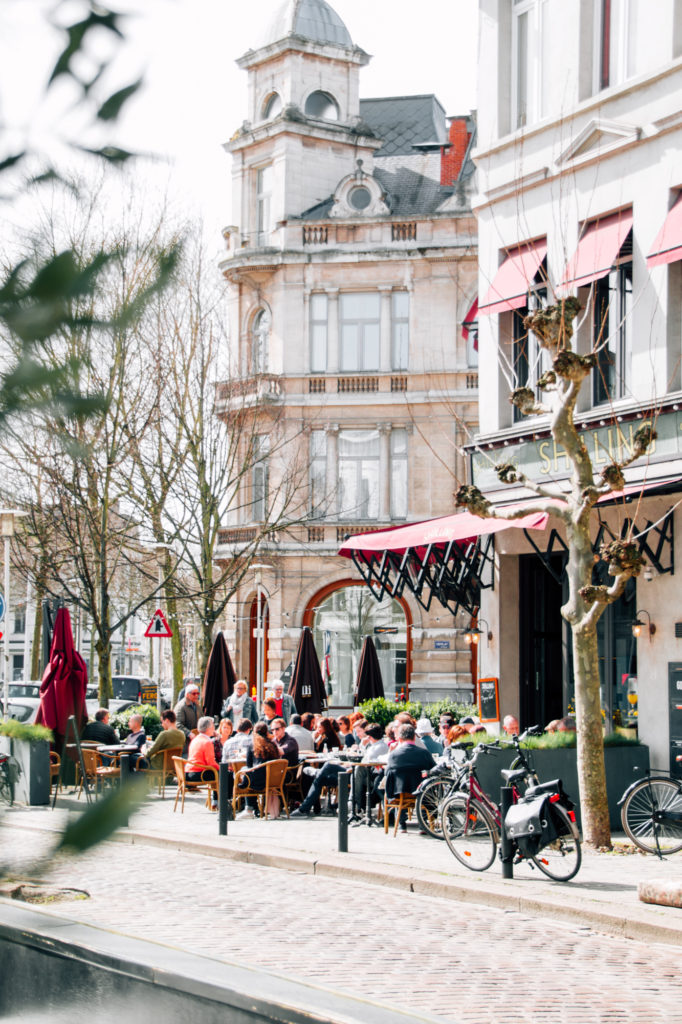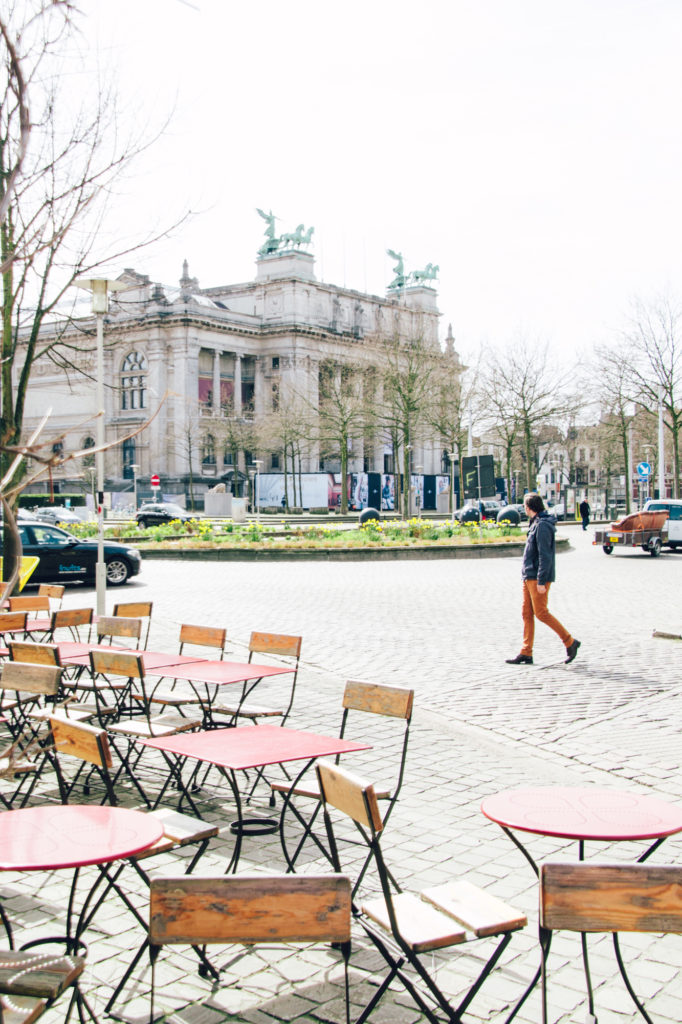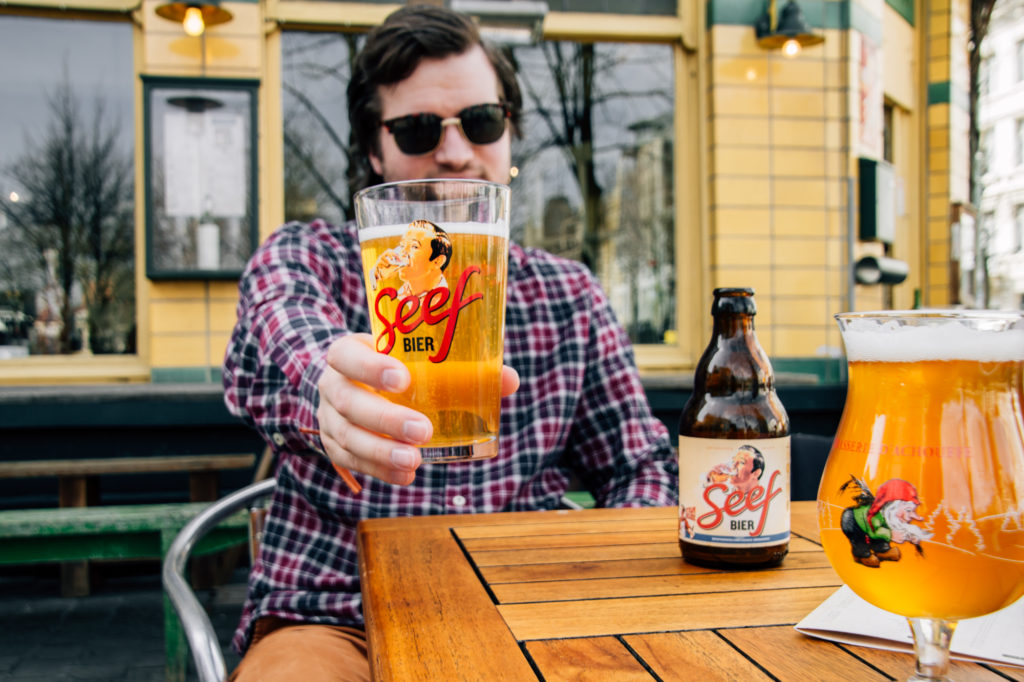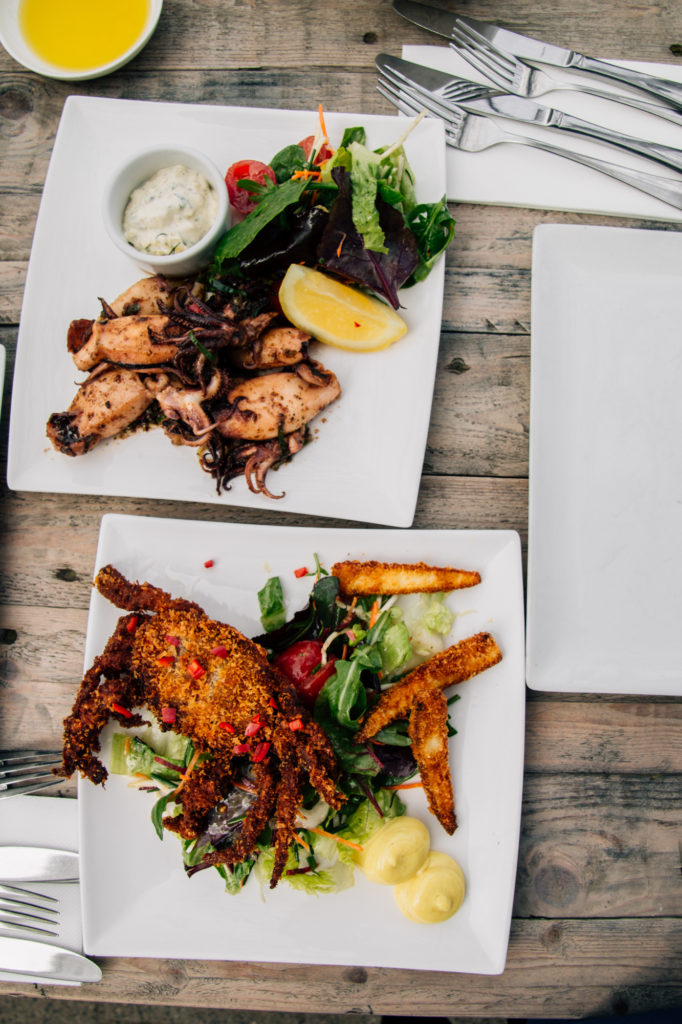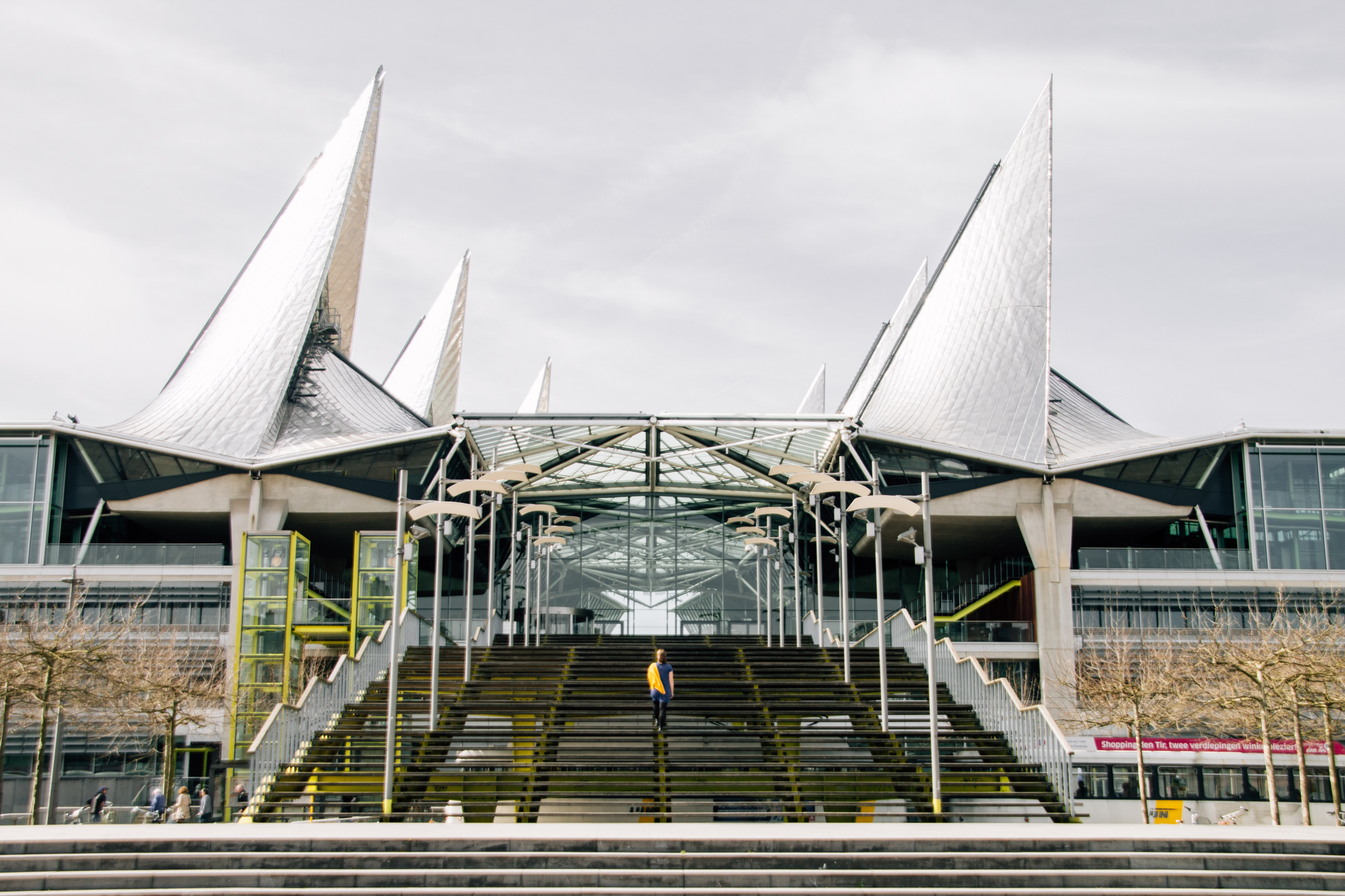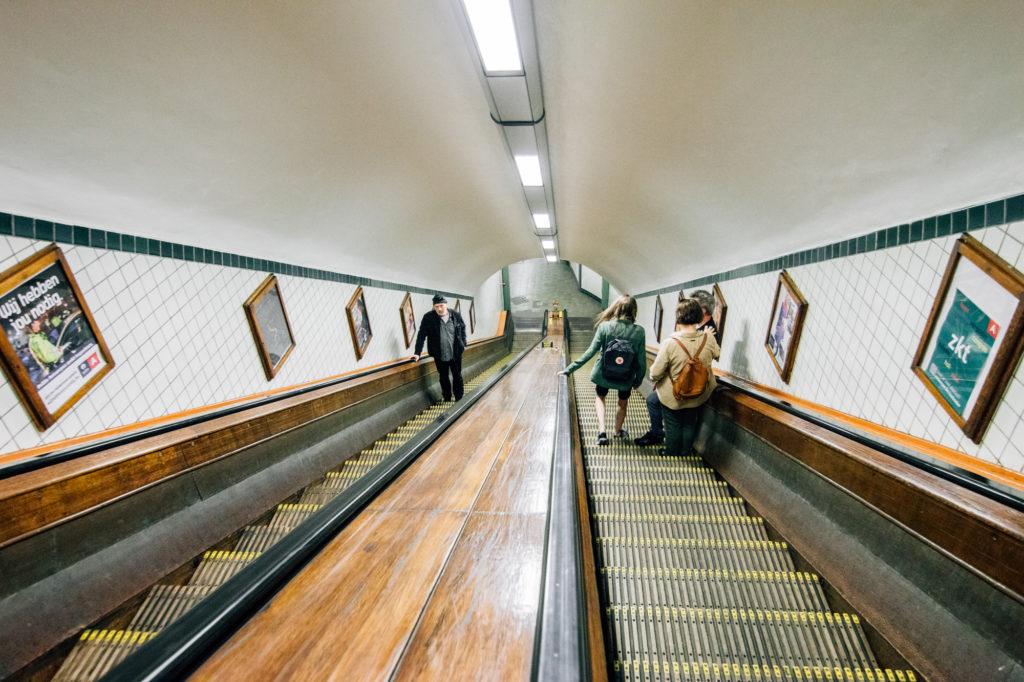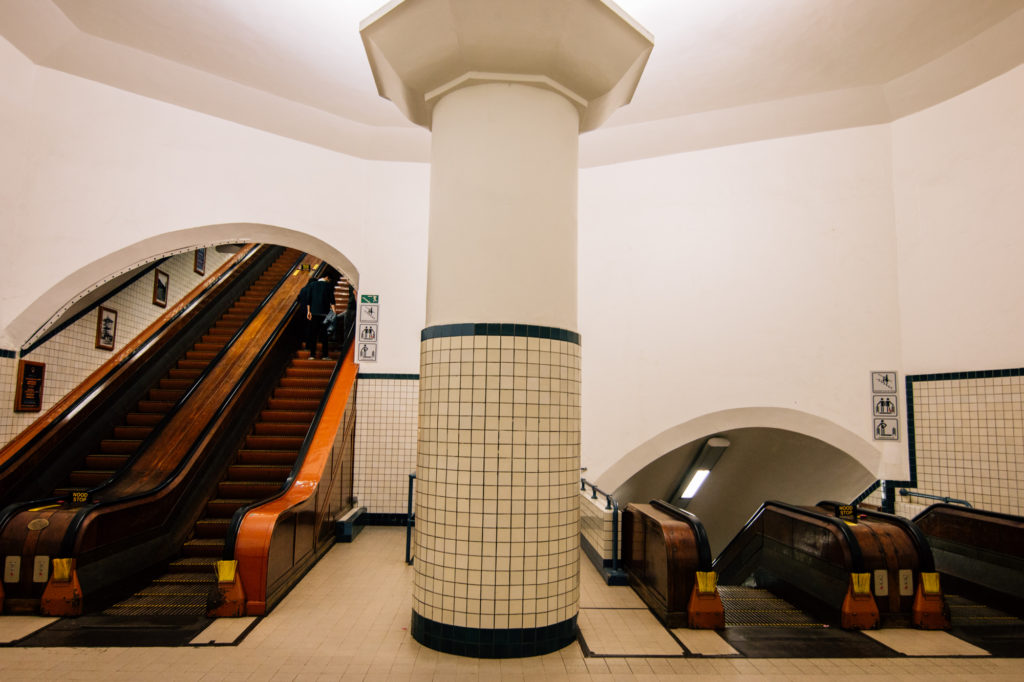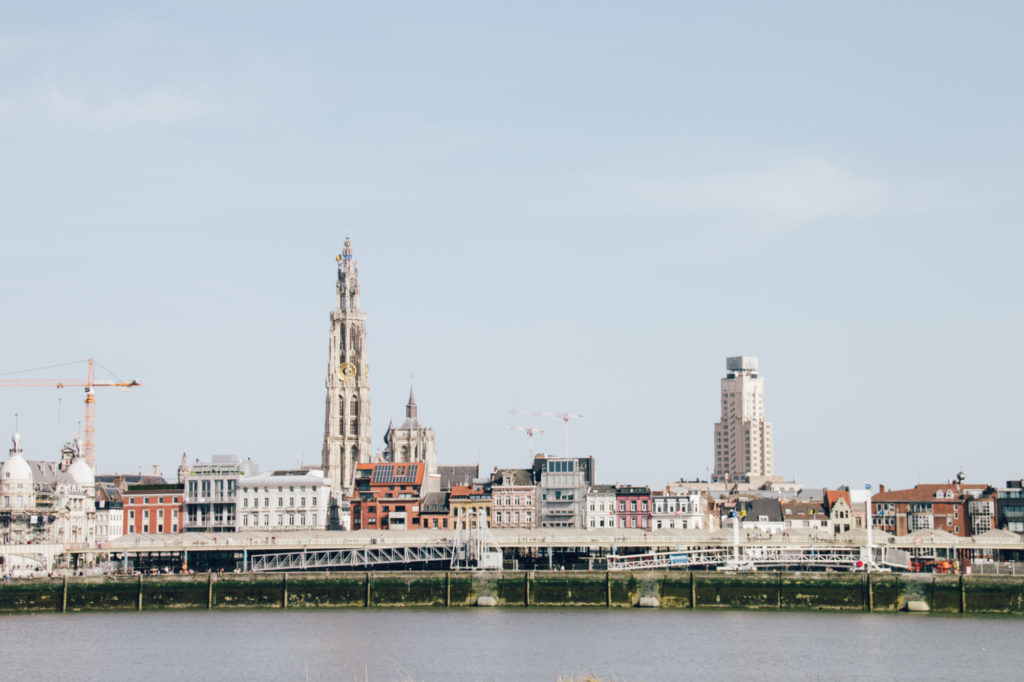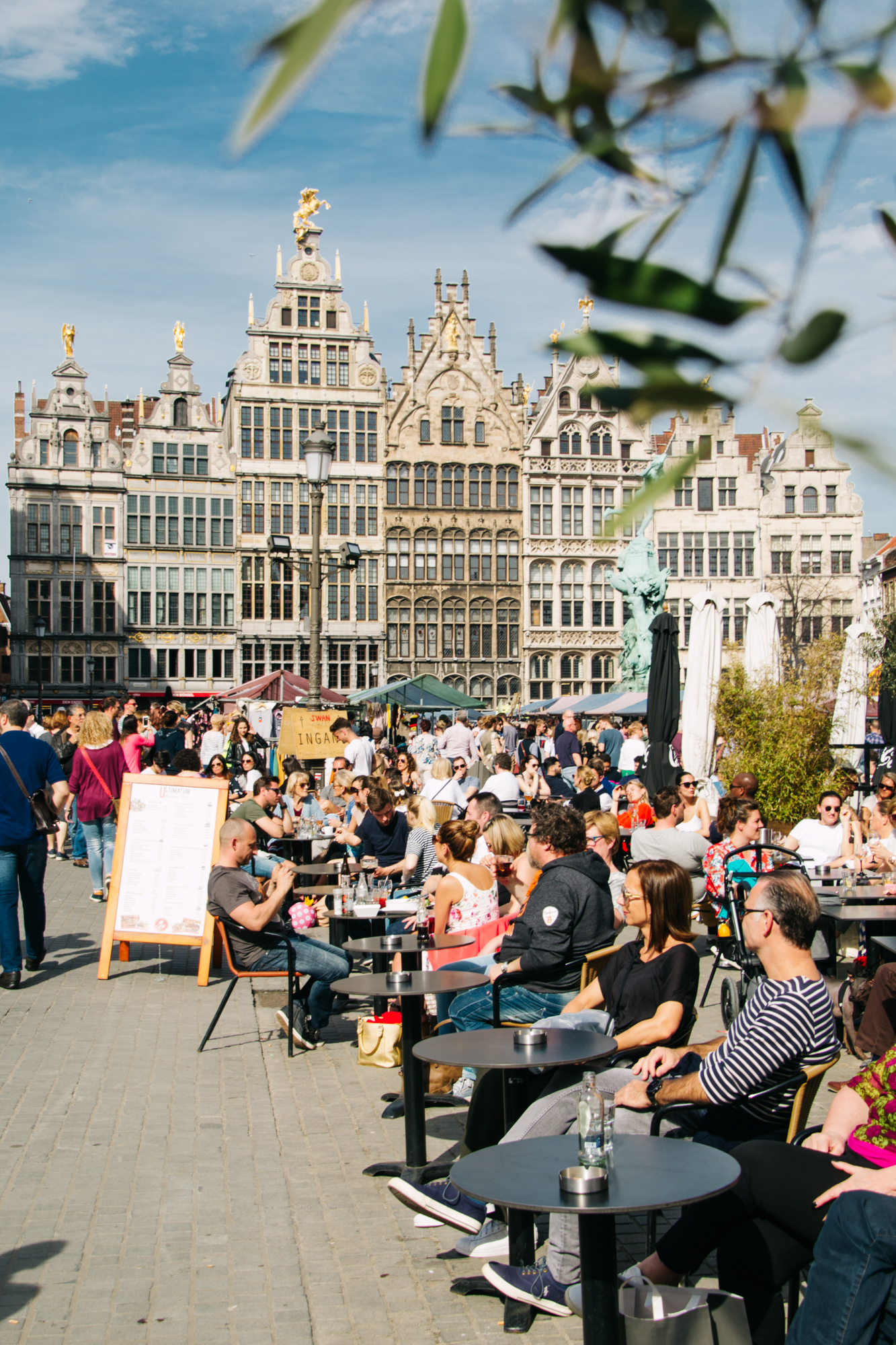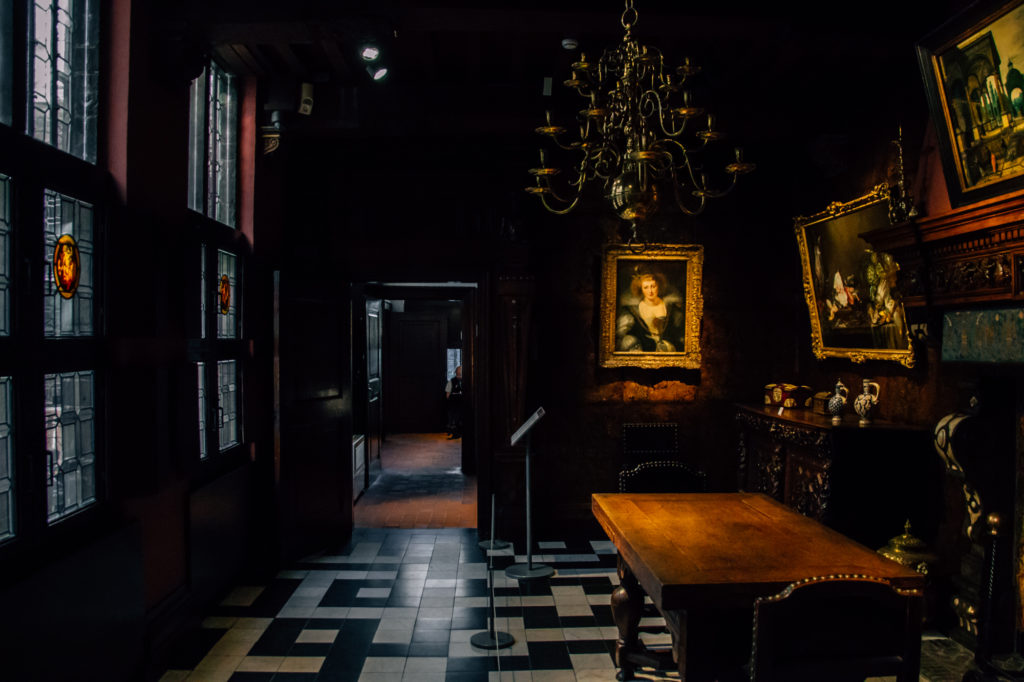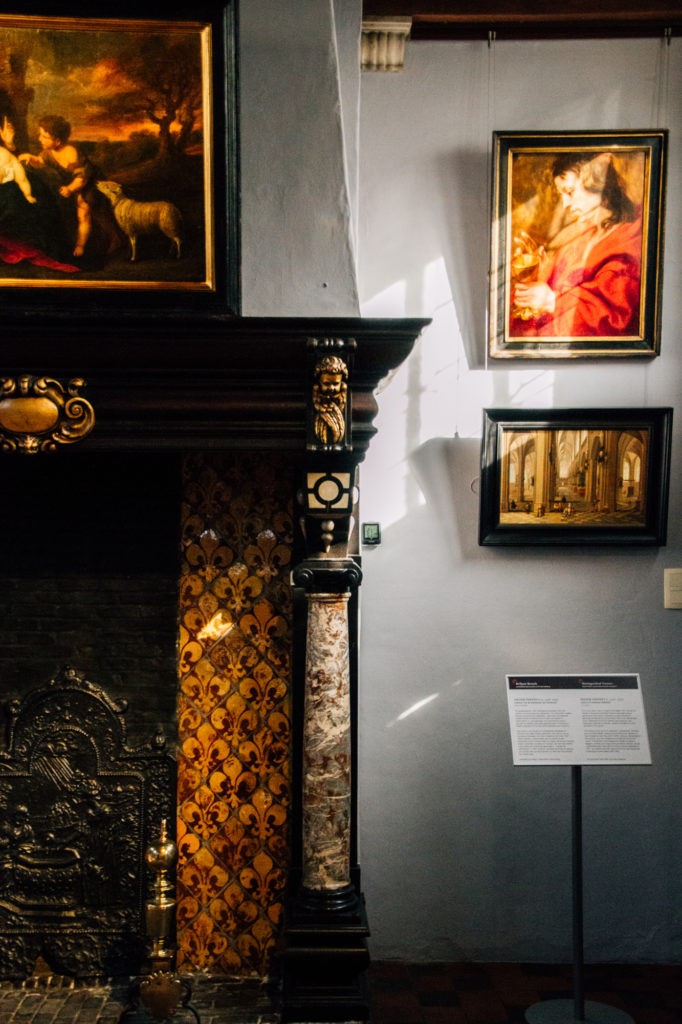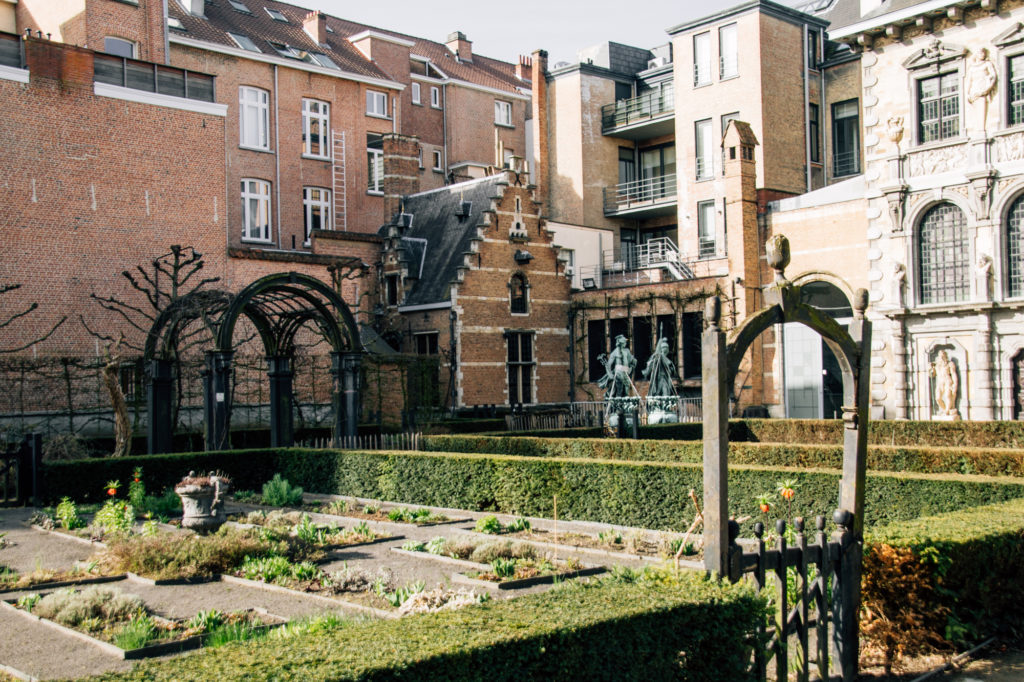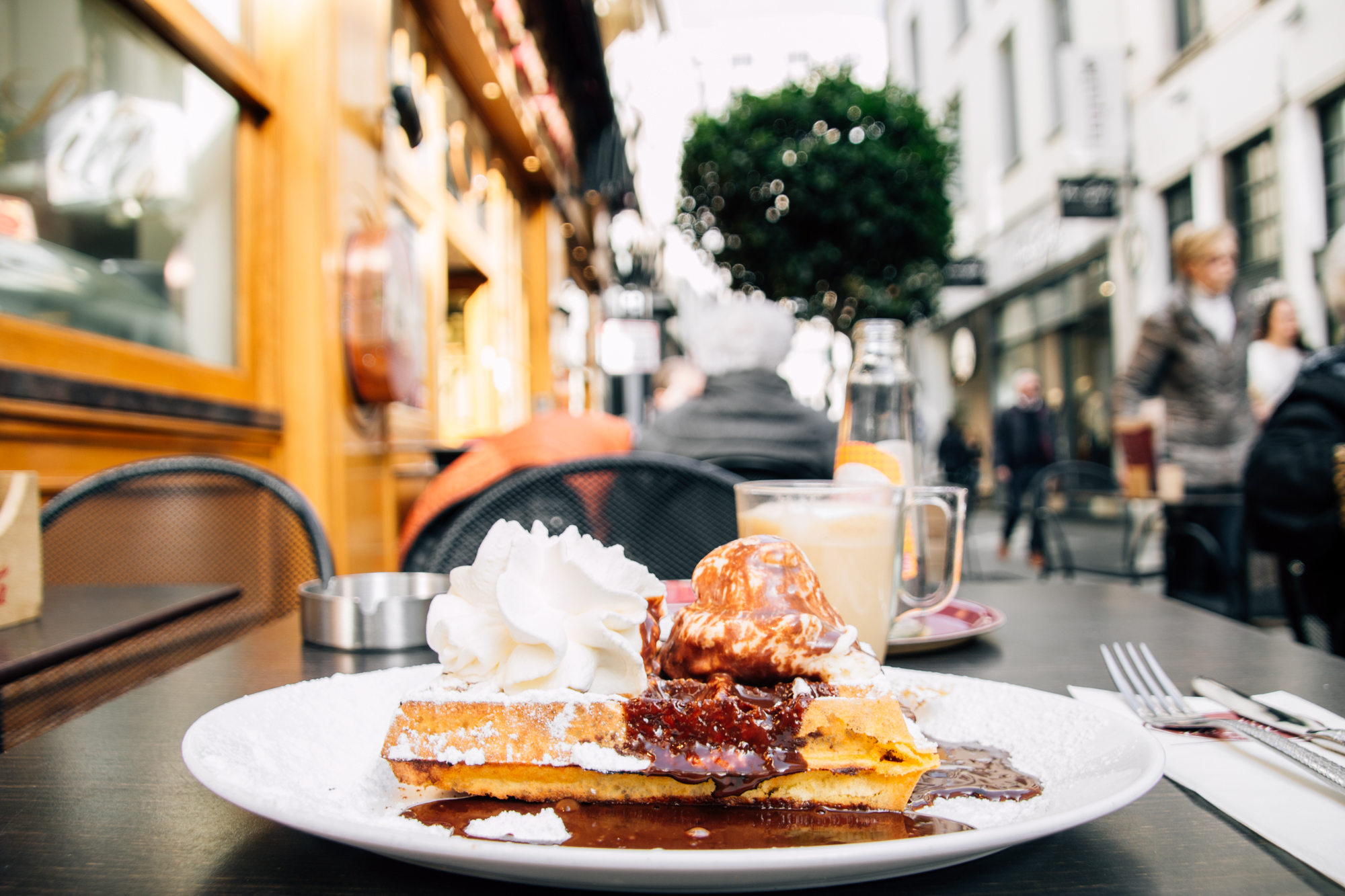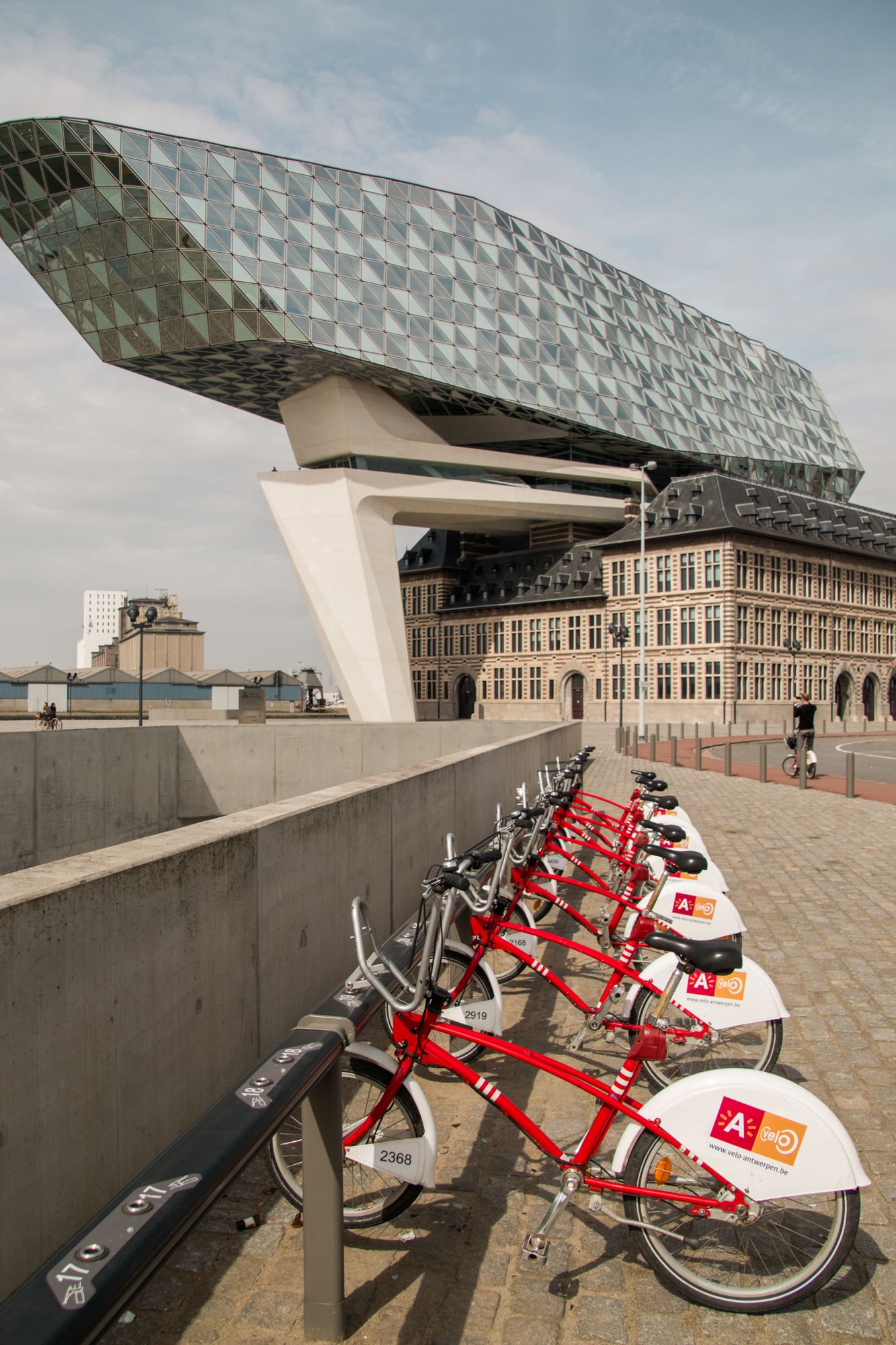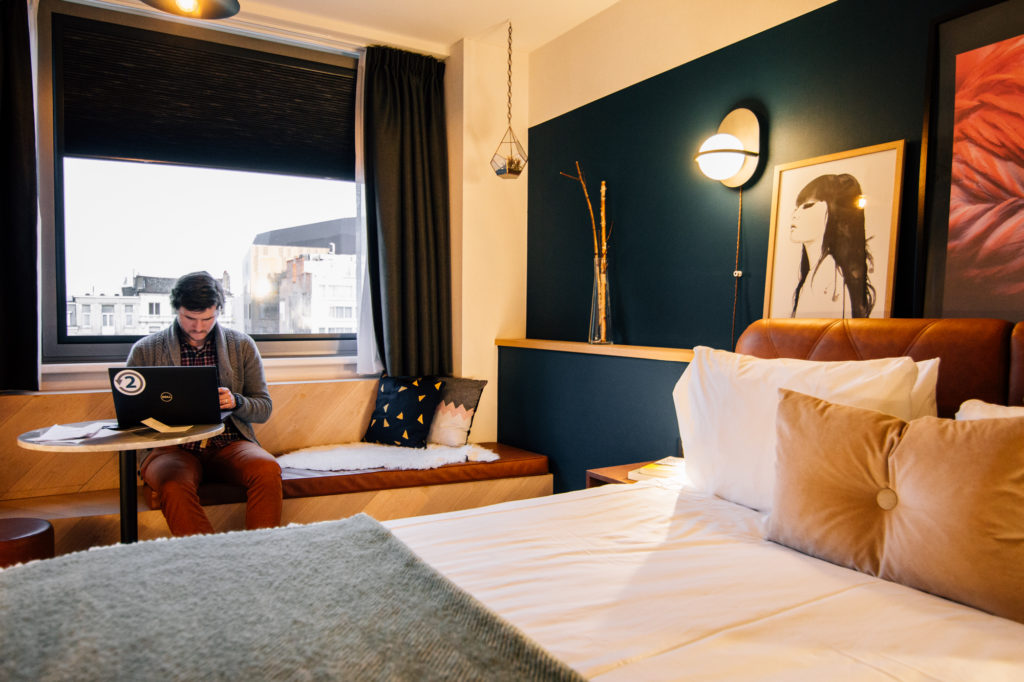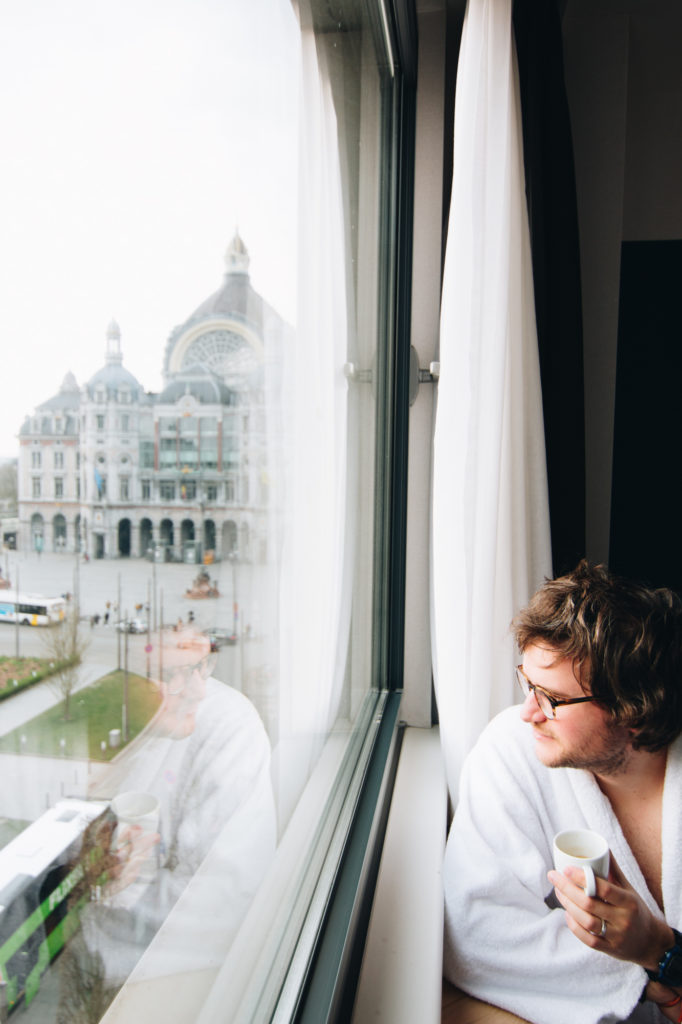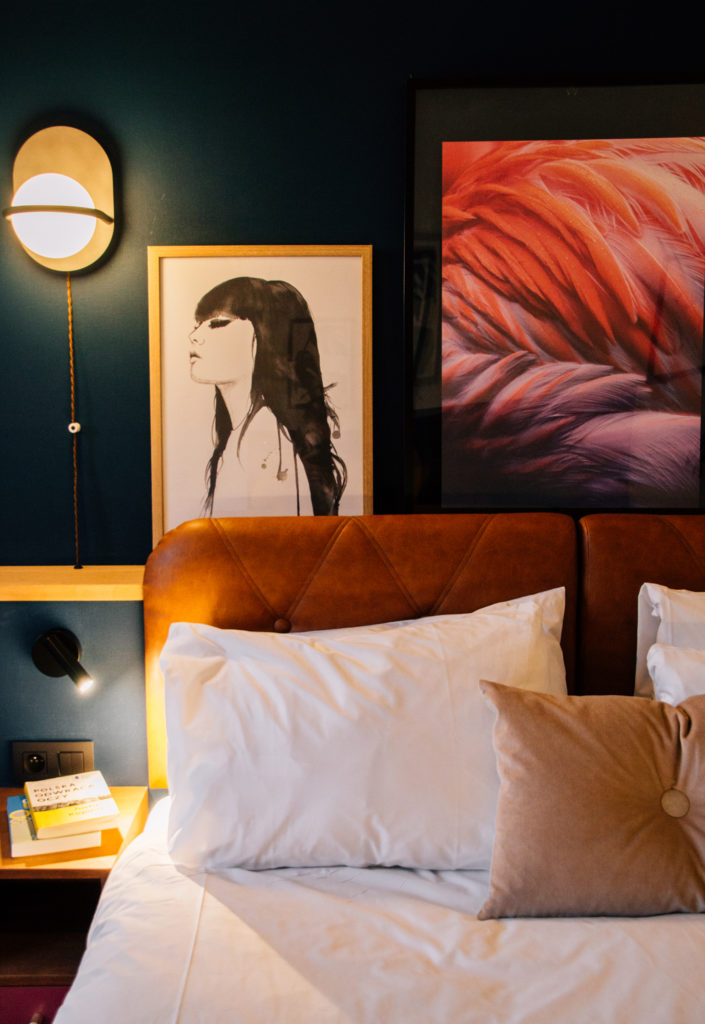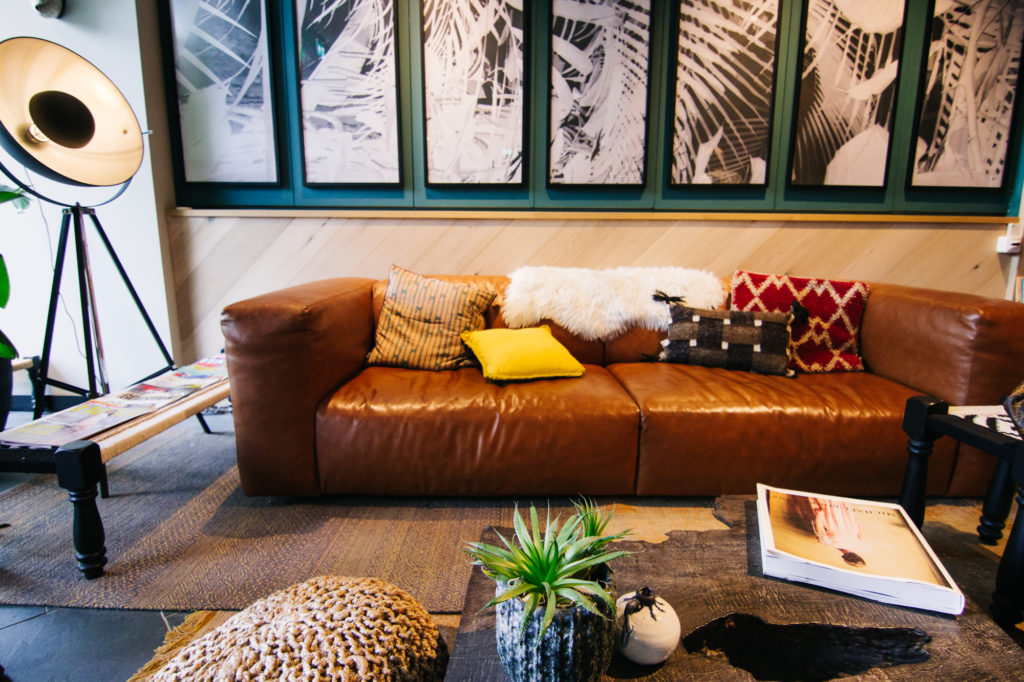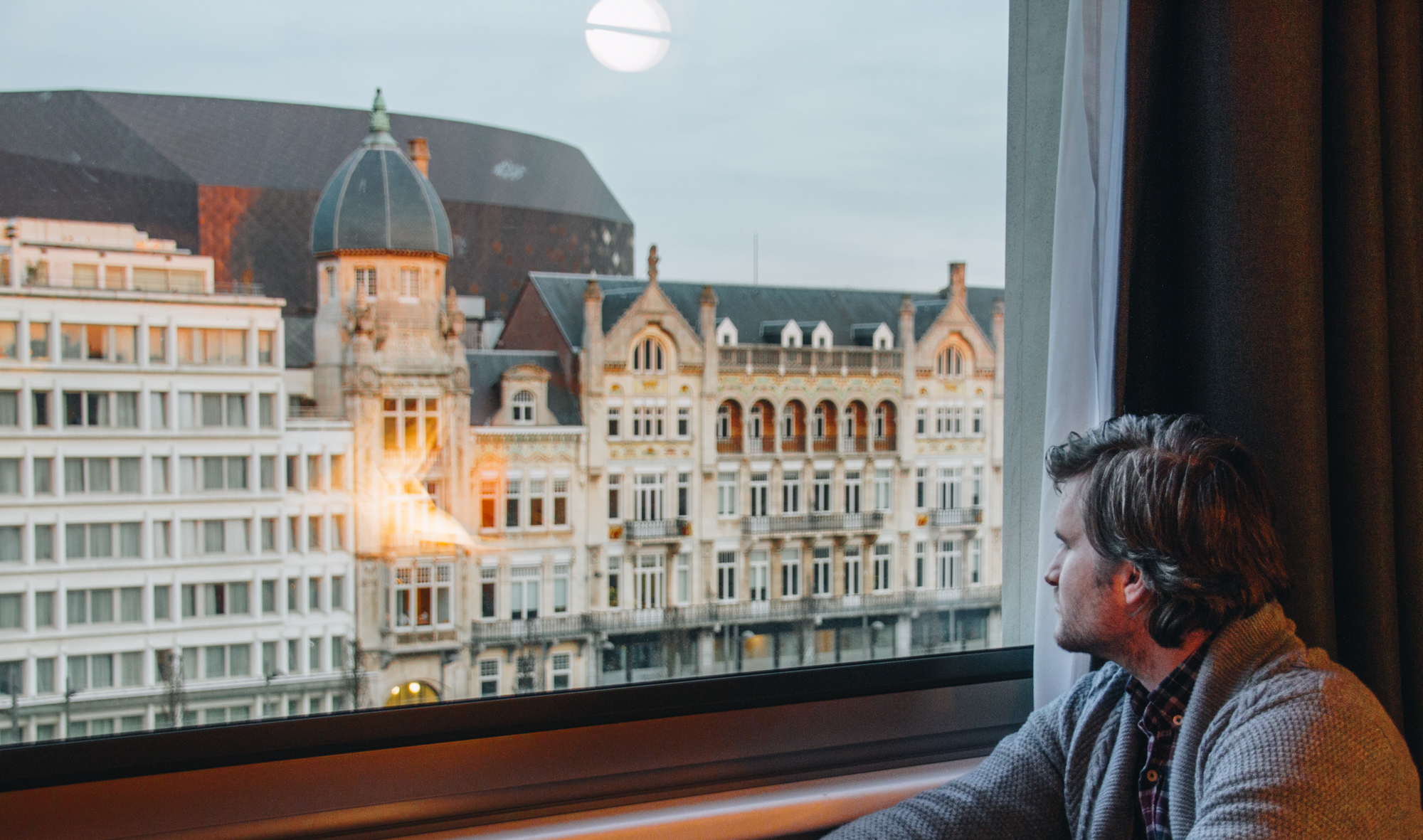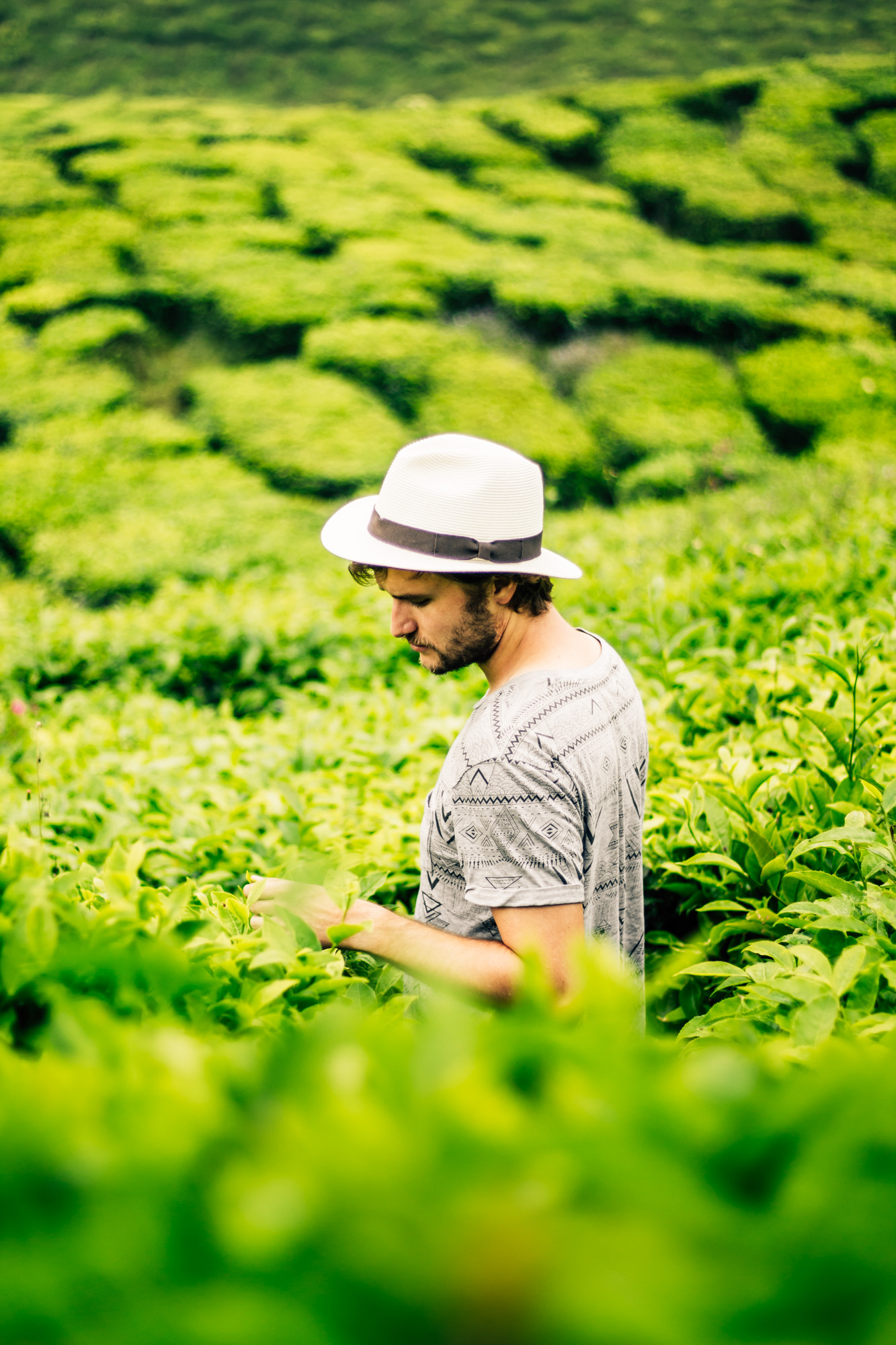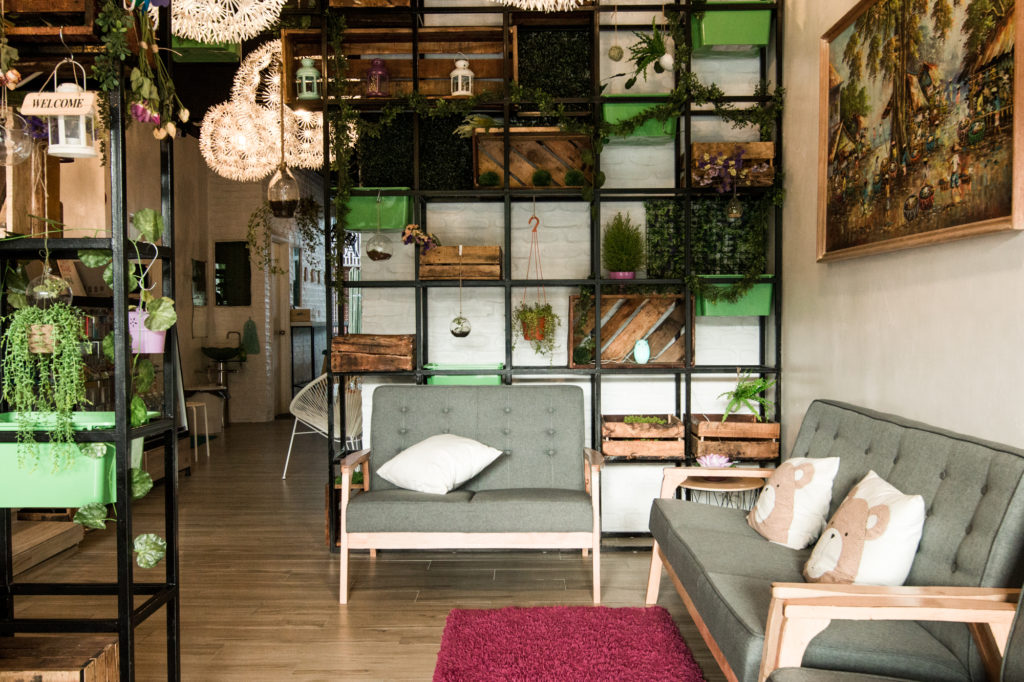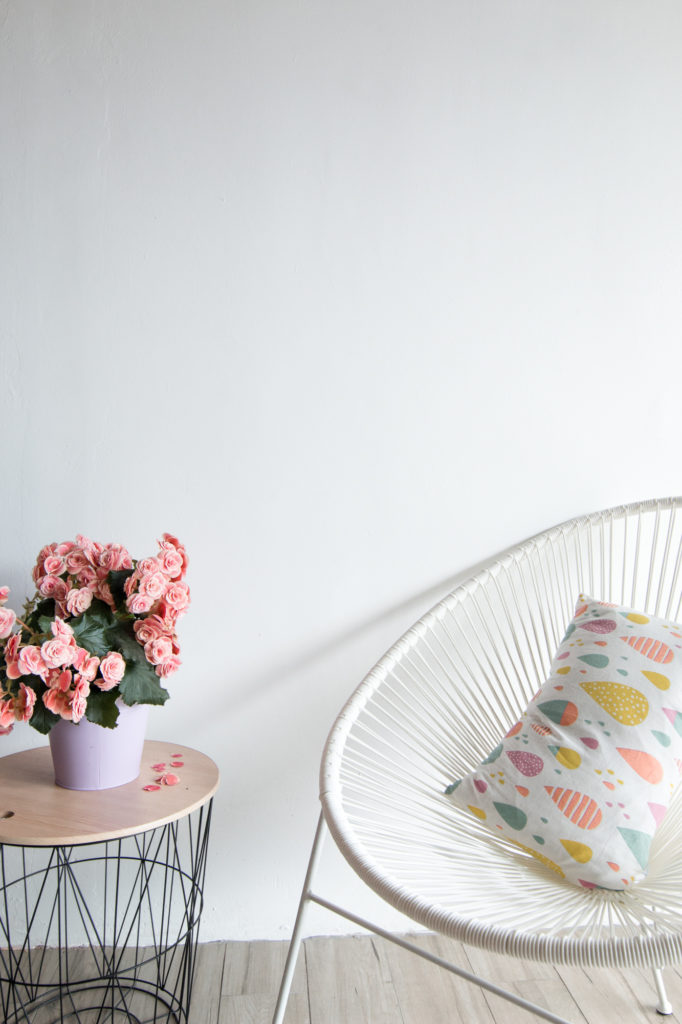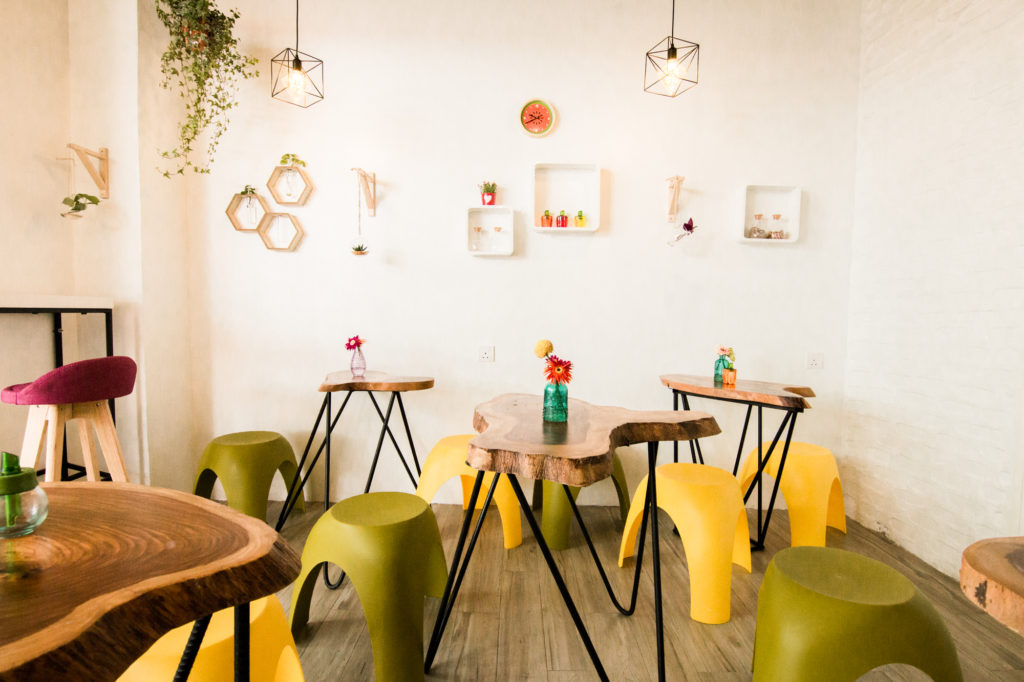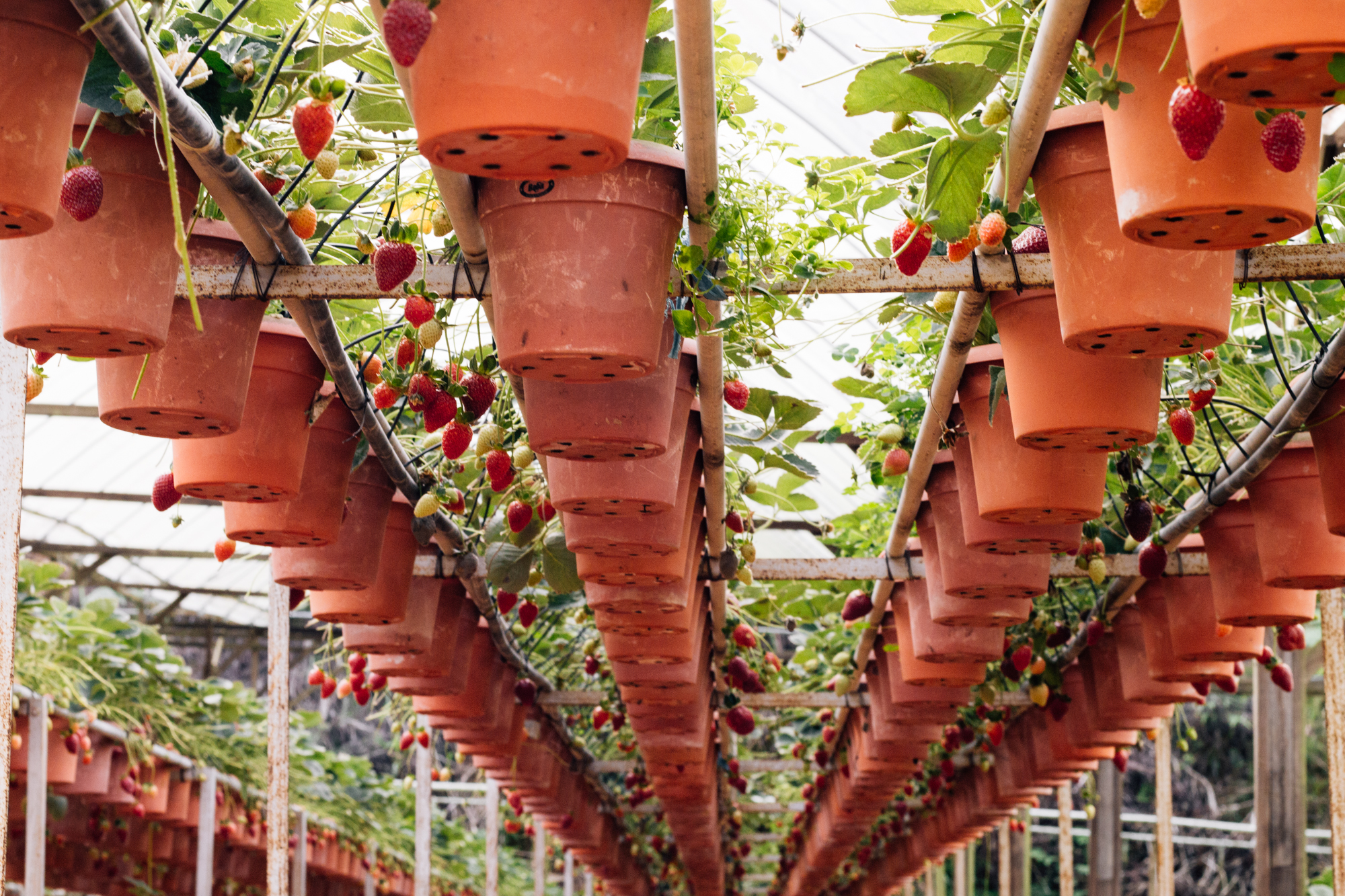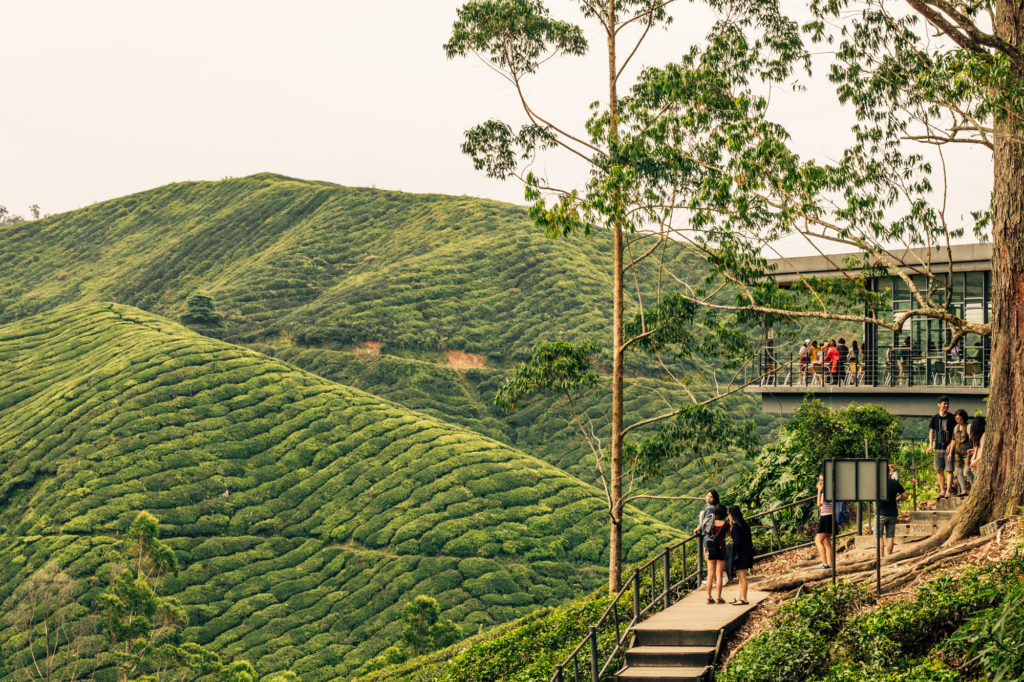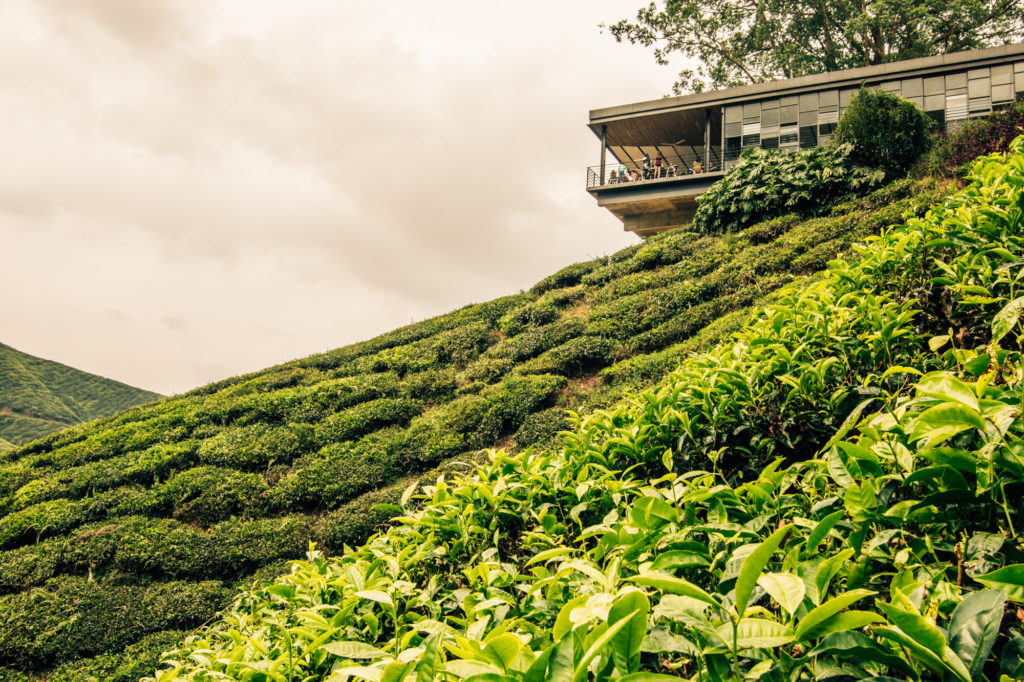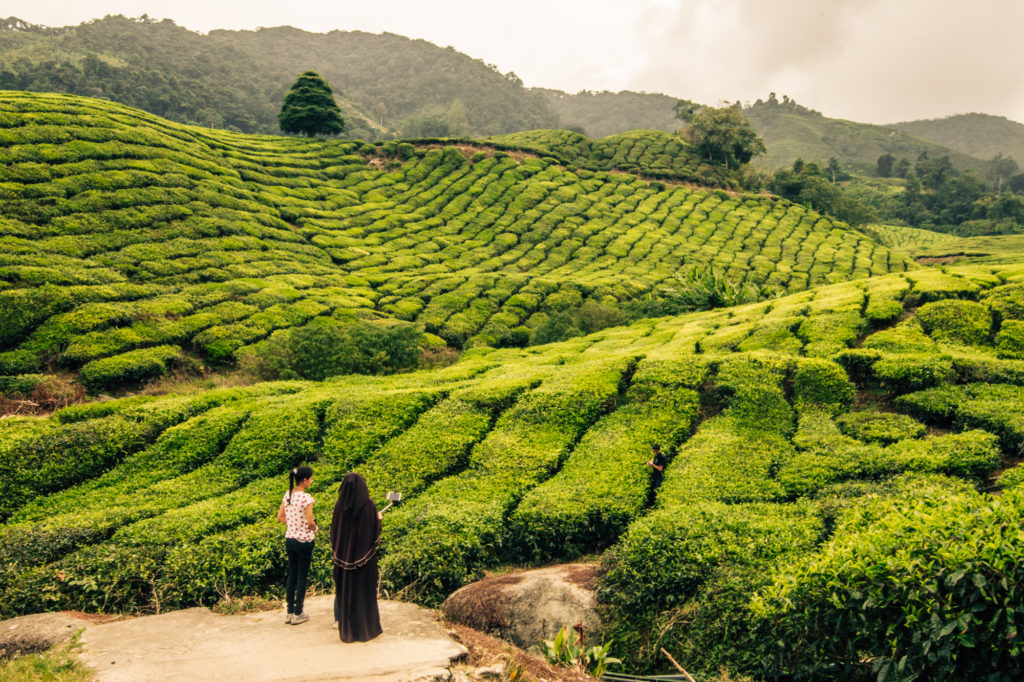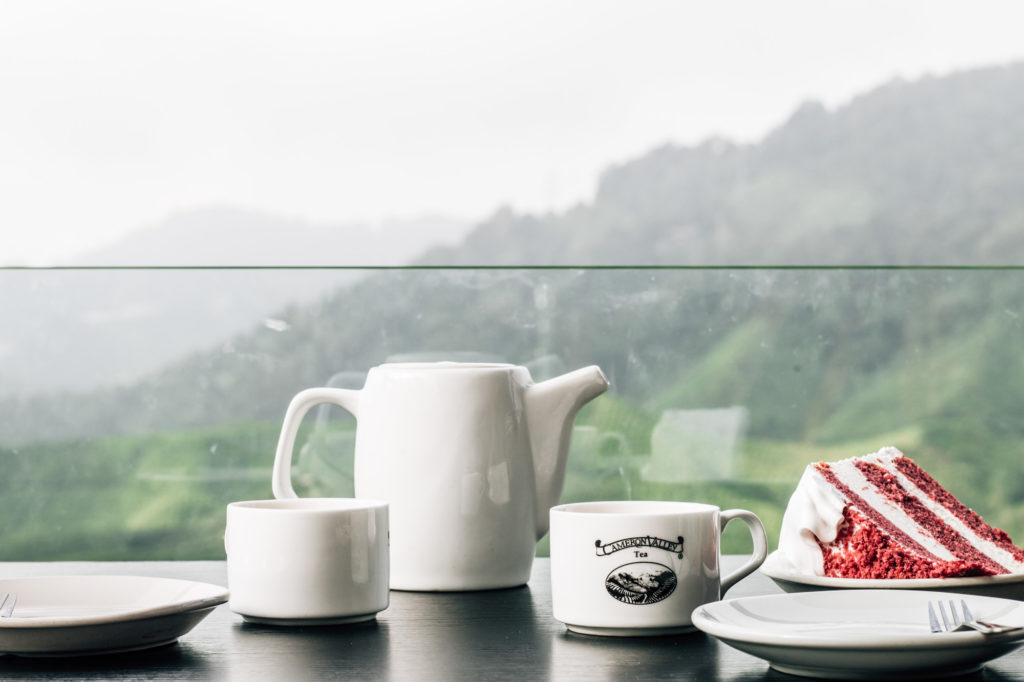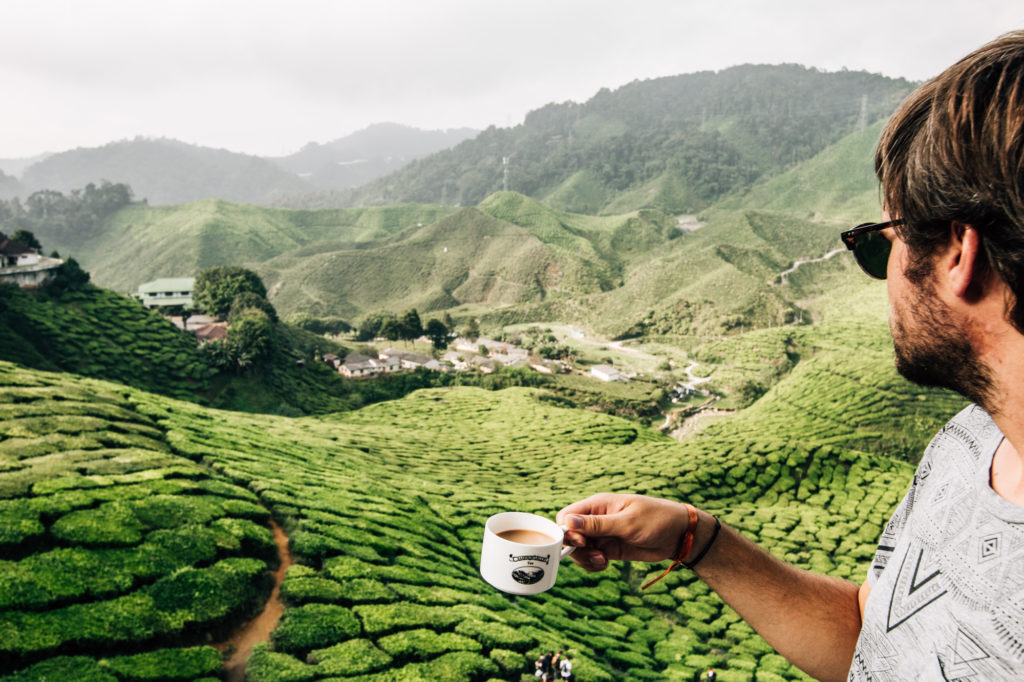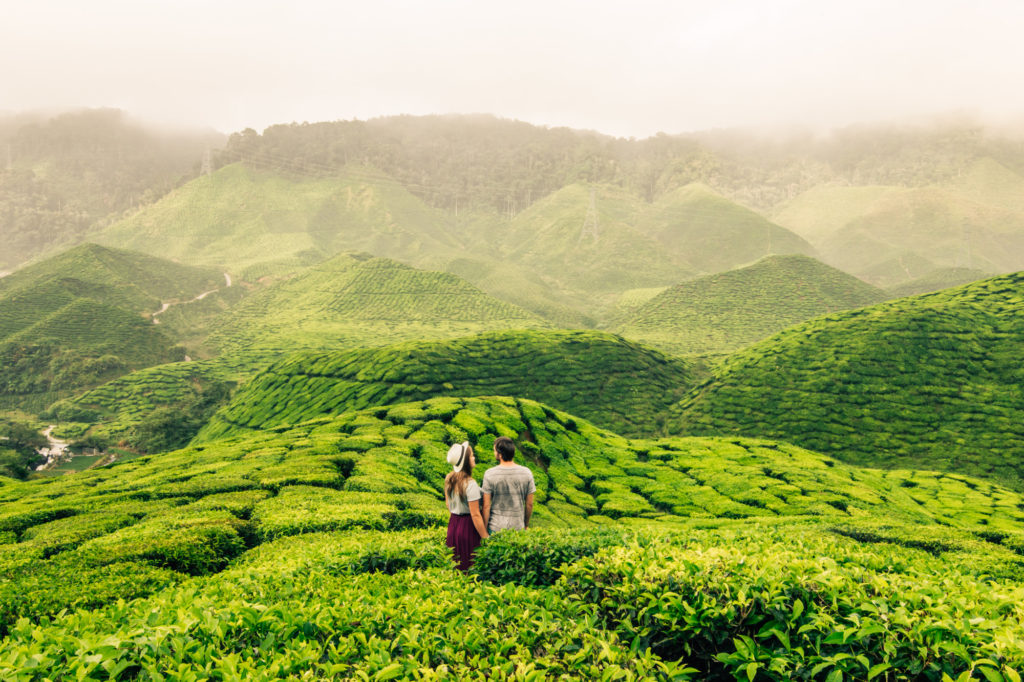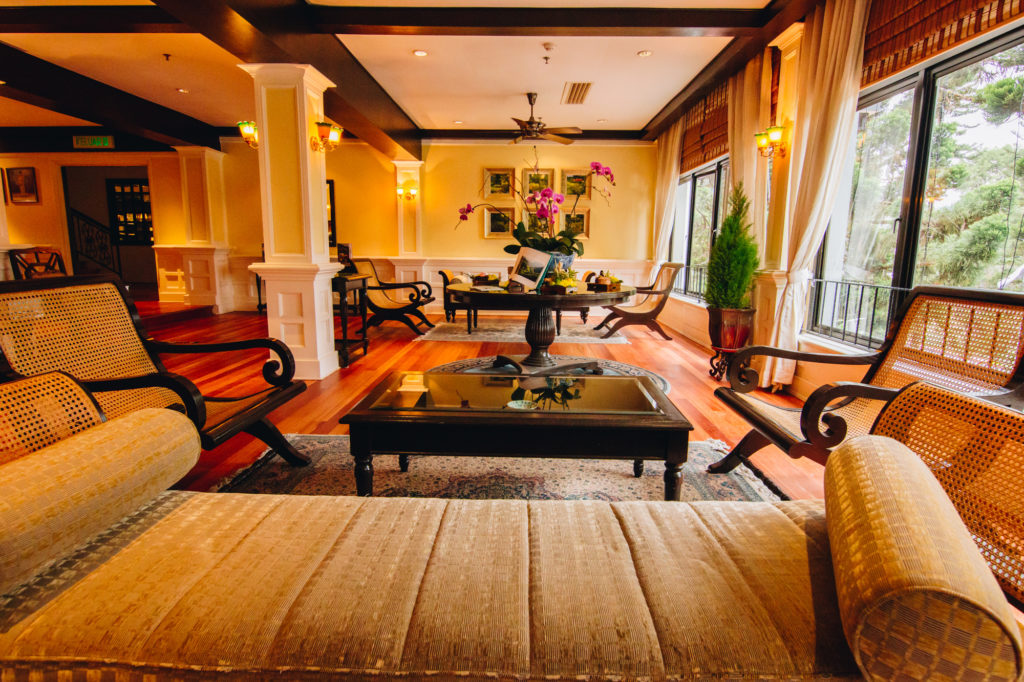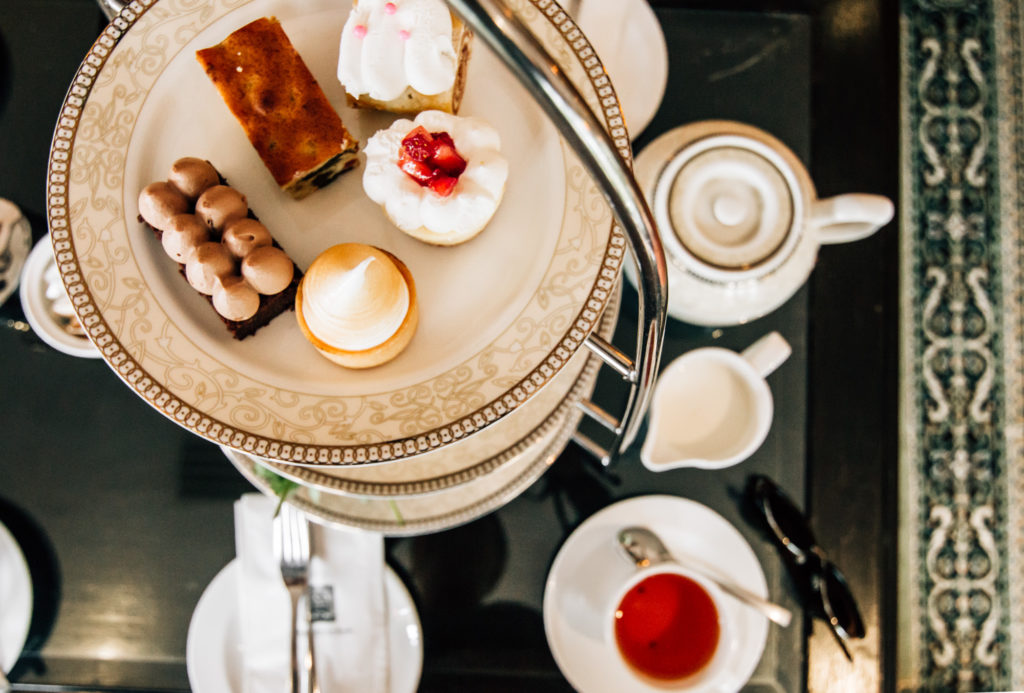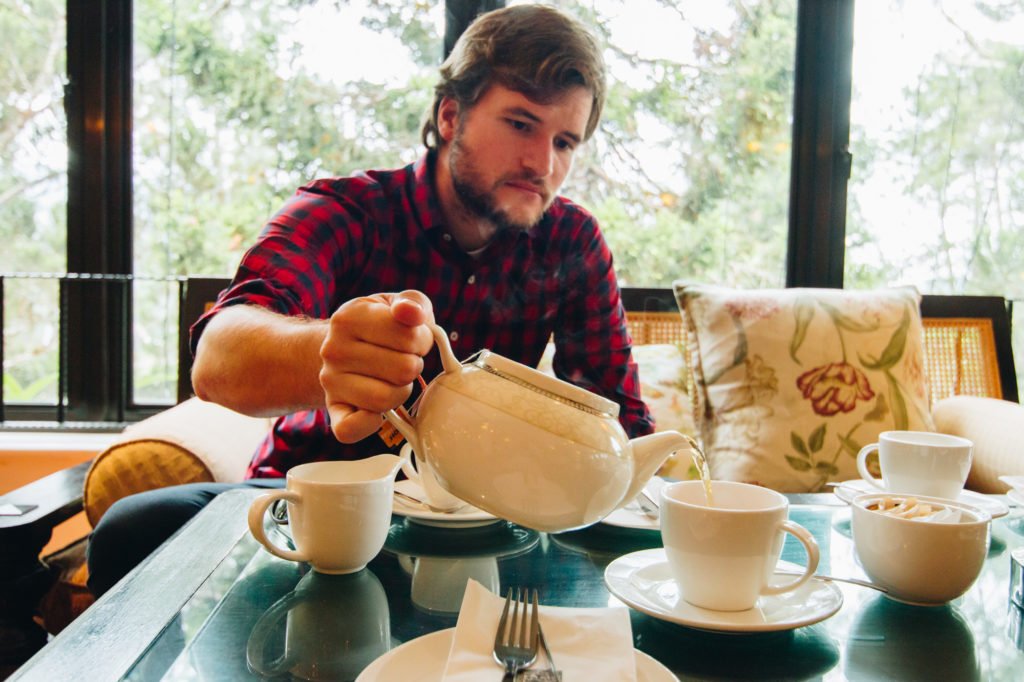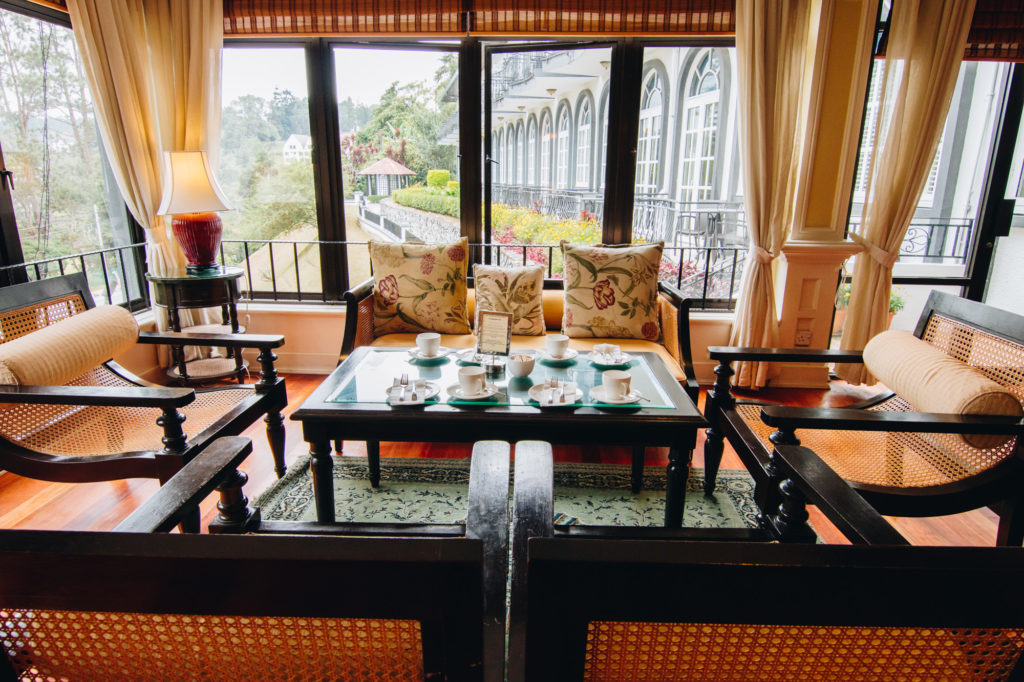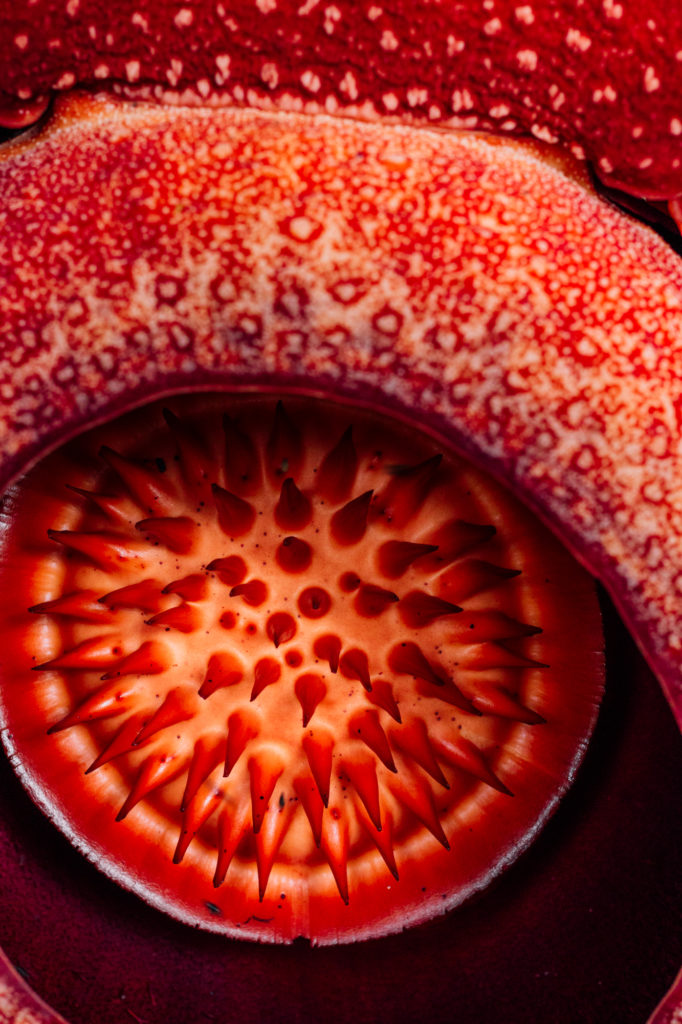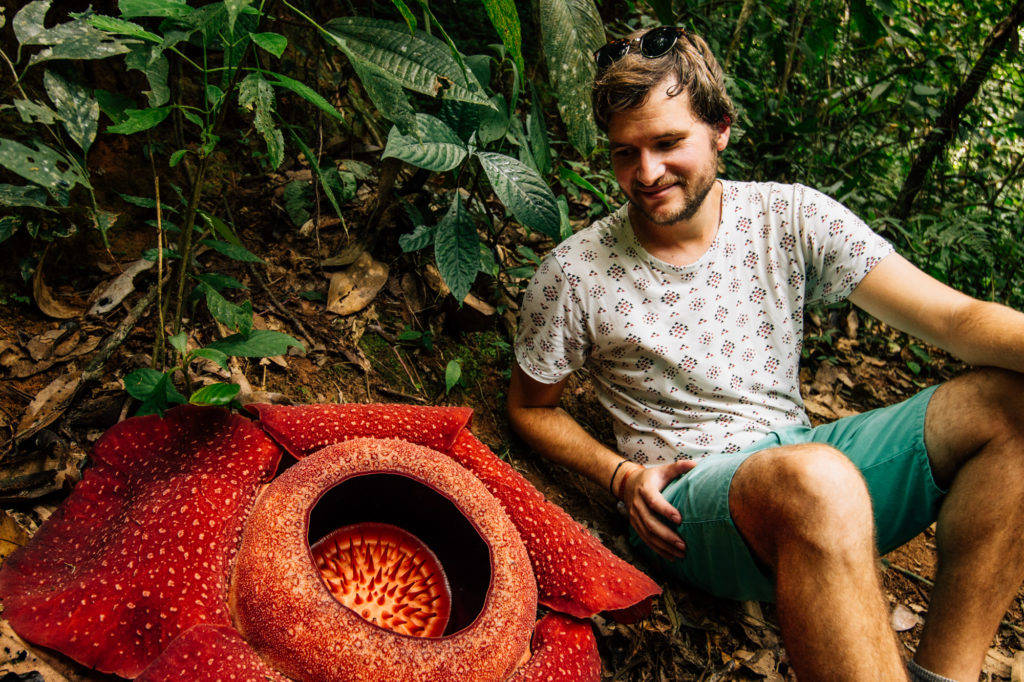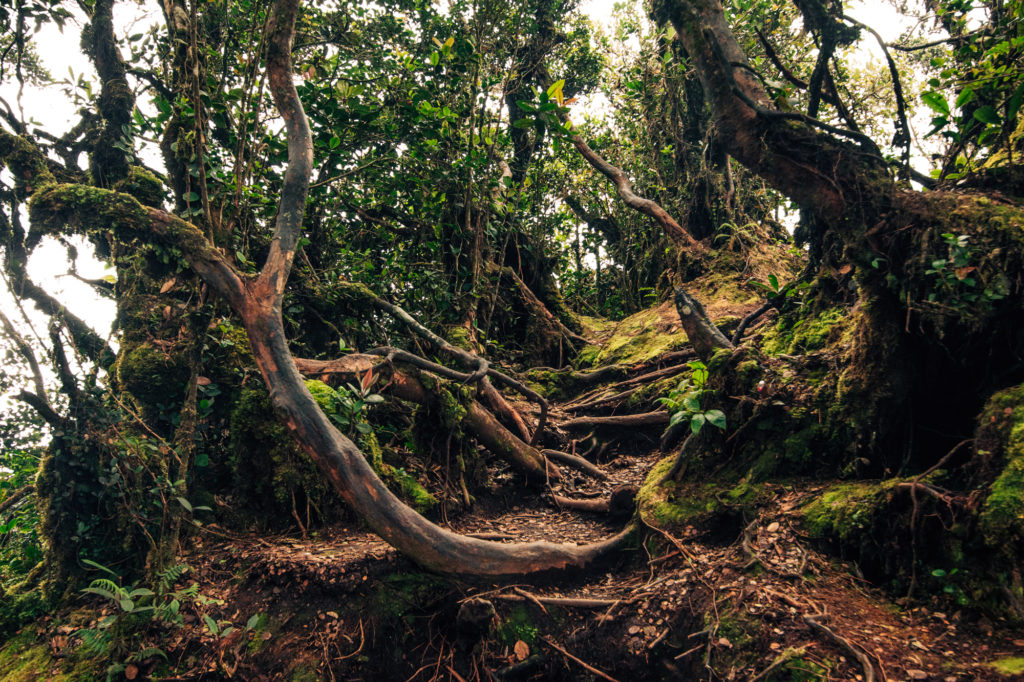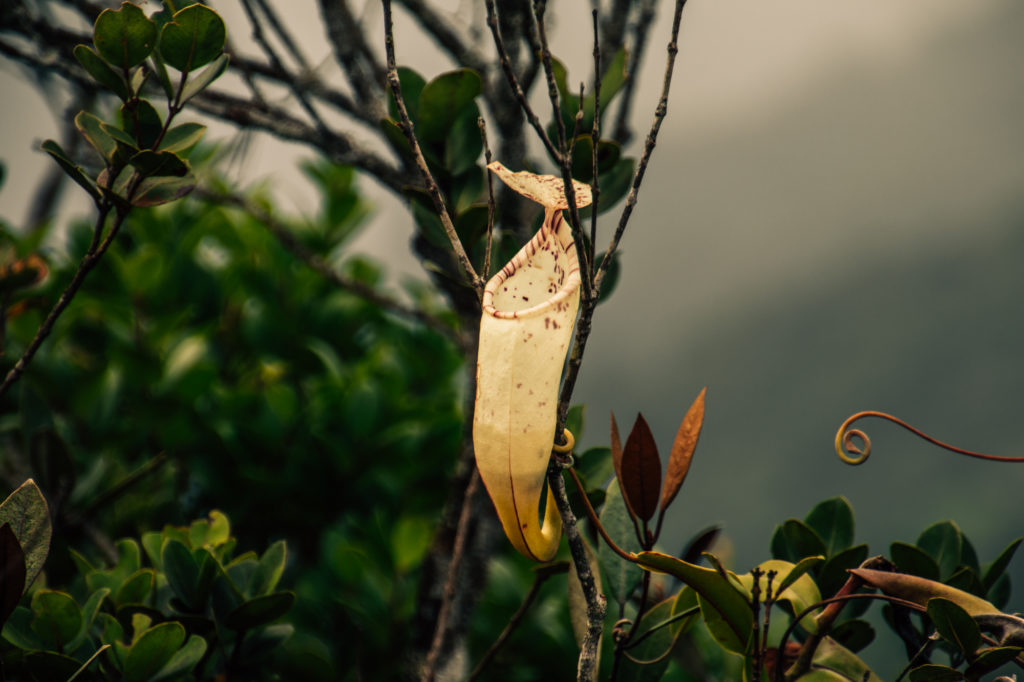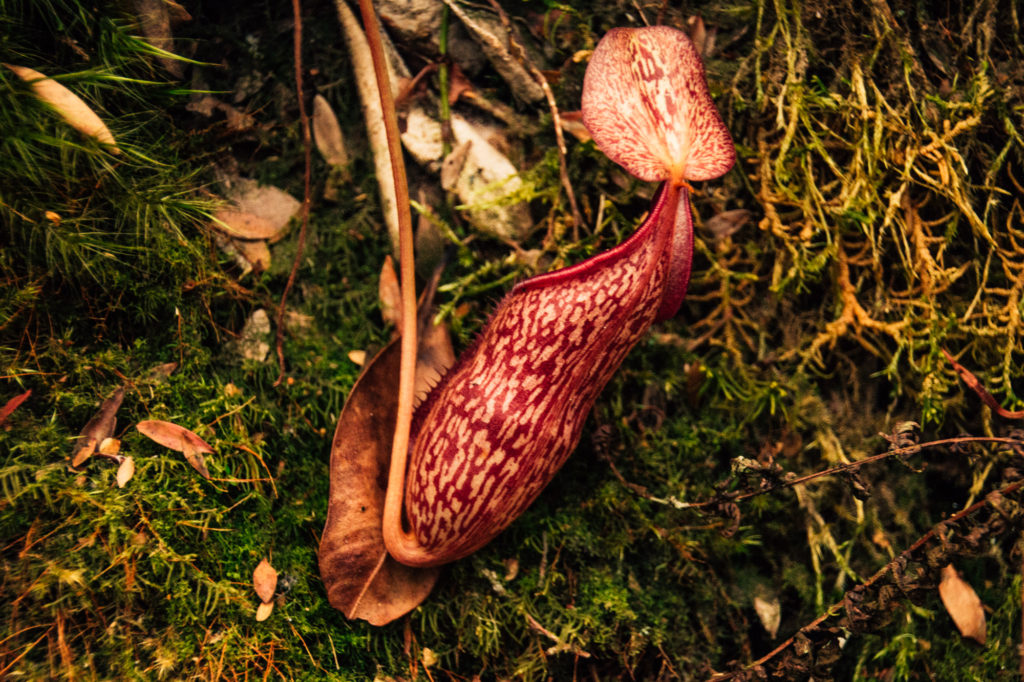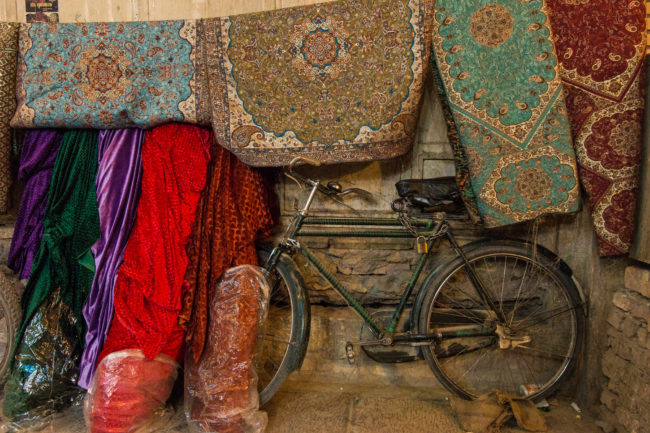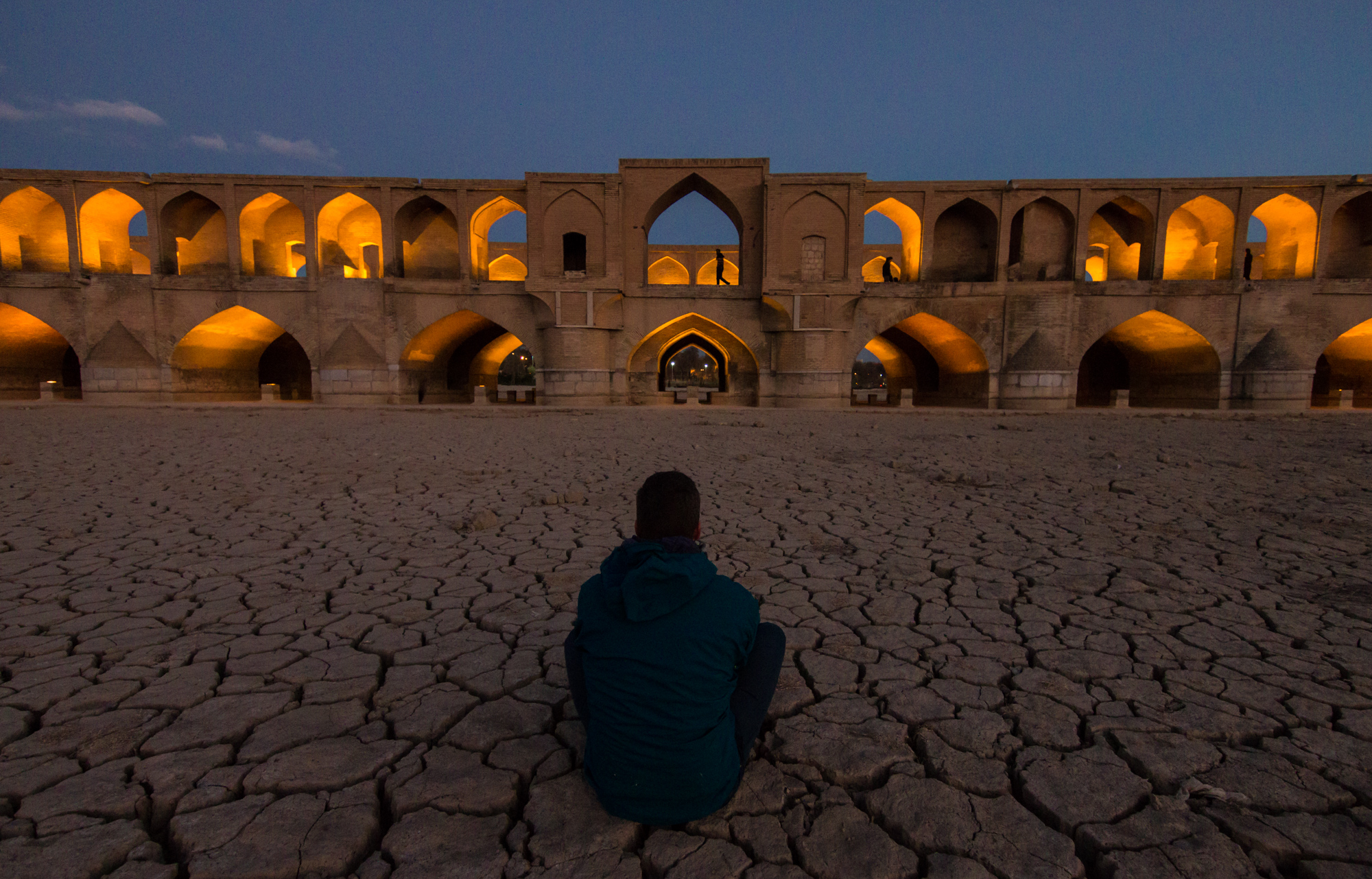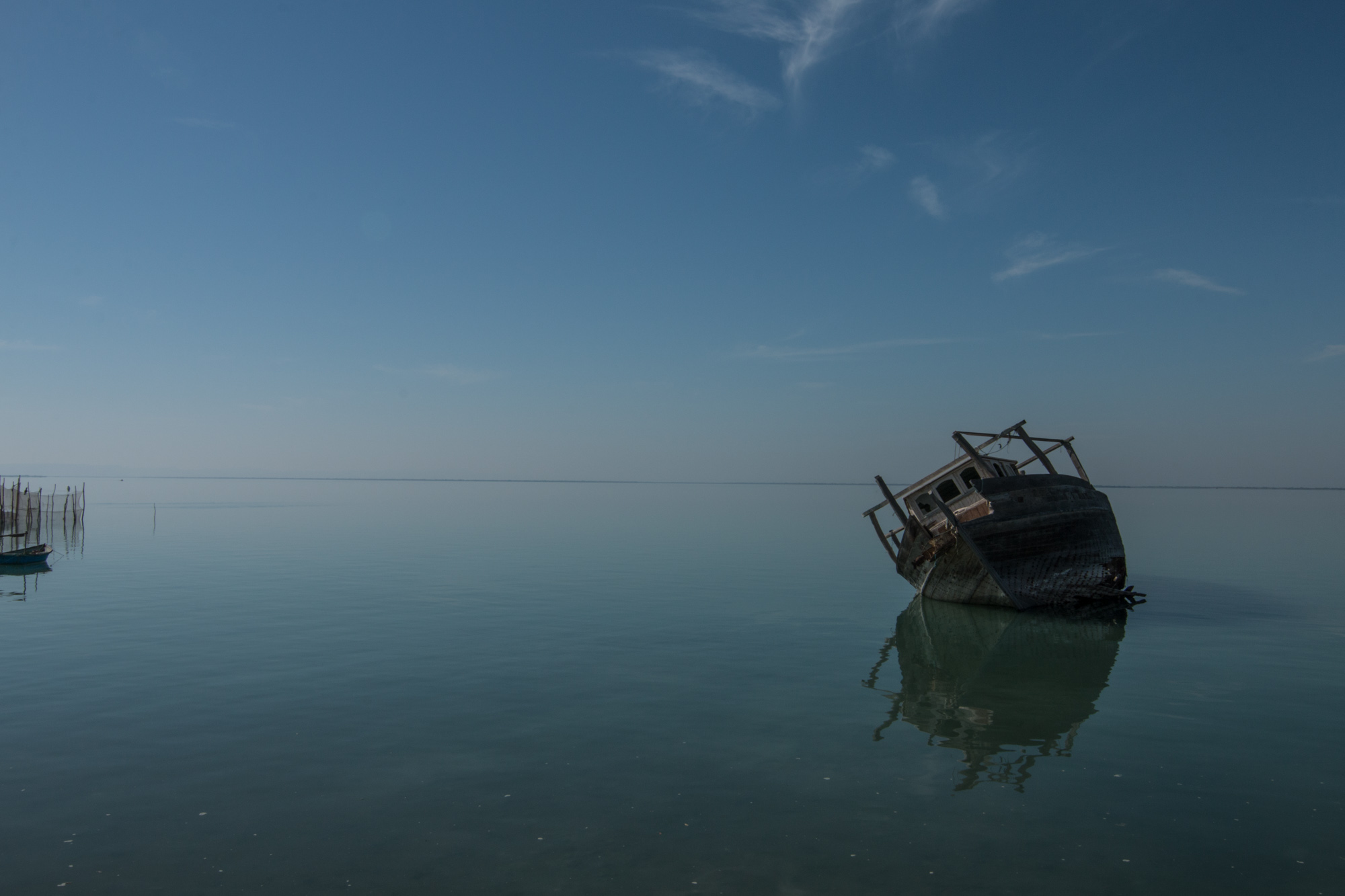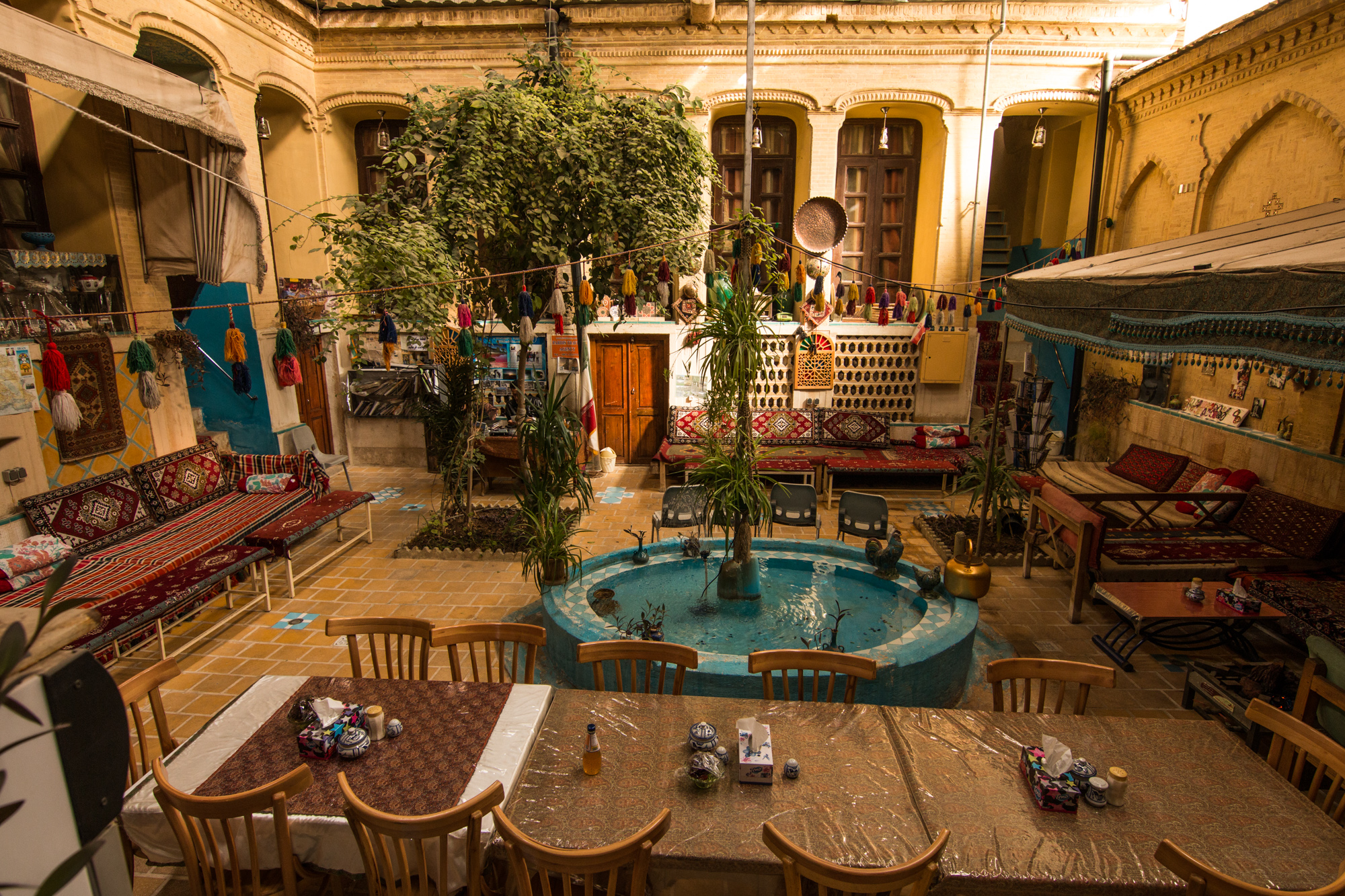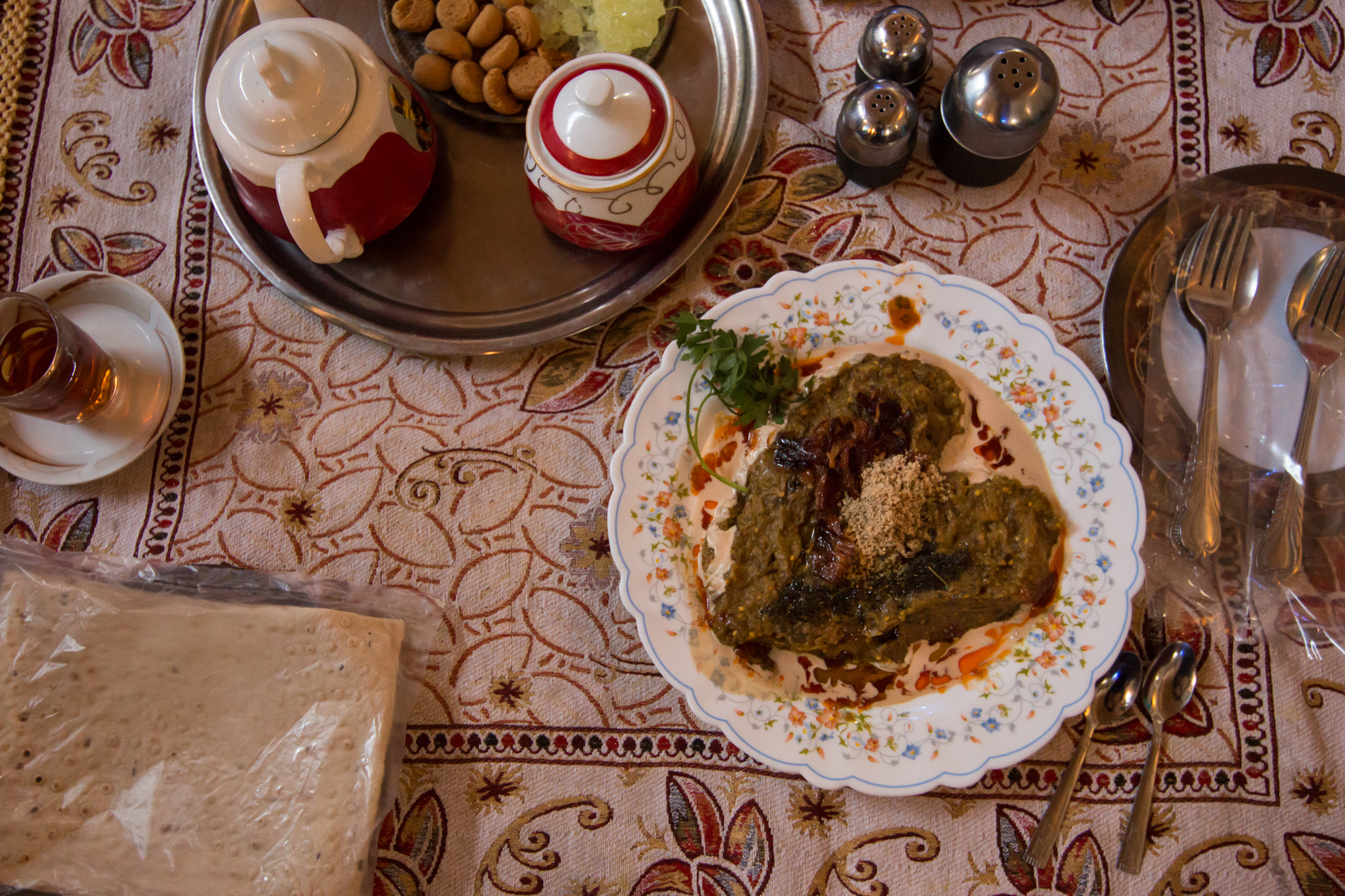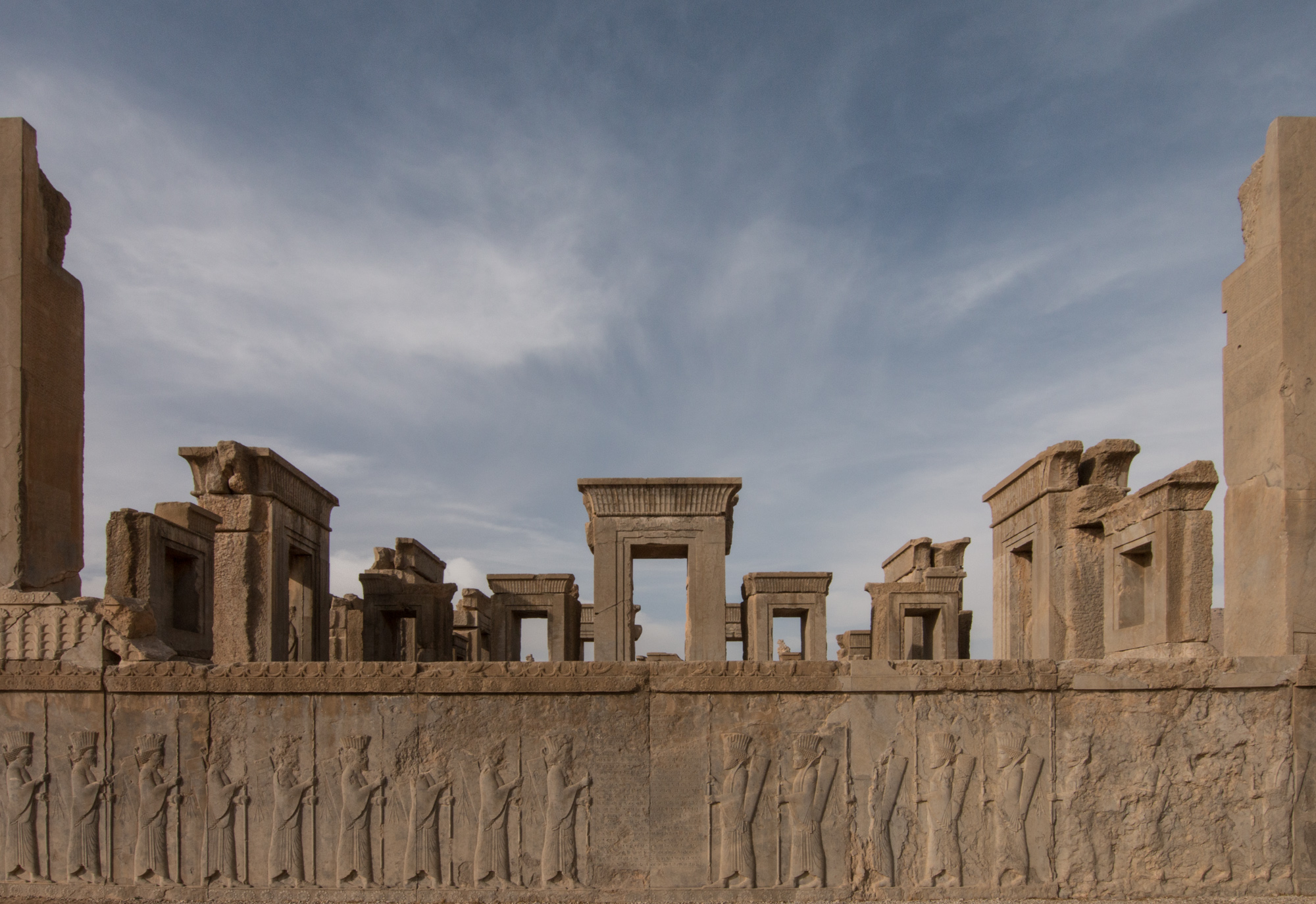Antwerp is not exactly one of the European “bucket list” cities. It’s rather an astonishing miracle that so far it managed to stay off the beaten track. Considering it’s so close to Amsterdam (1hr by an international train) and has an interesting blend of cultures. Influences from Holland and France are visible on every corner. People speak Dutch, enjoy French cuisine and stroll through art deco streets that could very easily go for some Parisian alleys. Except the crowds are missing. We visited the city on a weekend with a magical weather. Naturally we expected massive waves of tourists rolling from one bar to another tasting their way around Antwerp numerous beer hot spots. That did not happen. The city surprised us with many inviting tables outside charming cafes, restaurants and bars. All had seats still available but were not unpleasingly empty either. After all who wants to sit in a deserted bar, right? 🙂 Good ones are never empty and Antwerp has quite many really good ones.
Antwerp is not as overwhelming with activities as Paris or Amsterdam which makes it a perfect getaway for a weekend. There is enough to see and experience to feel active and satisfied. At the same time it’s not as big as not to find time to enjoy some of the local specialties in many exquisite restaurants, bars and cafes.
Central station
Like most of the people coming to the city we arrived by train at the Central Station. There is only one word that could explain how this rail station is and it’s GRAND. Couple of floors of trails, iron and glass hall both very long and very tall left us speechless. After all Antwerp is not a massive city that would need such an extravaganza. But we never complain about something being too pretty or too big, right?
The station opened in 1905 and it has been through some hard times. It was damaged during World War II and it even got to a point of almost being demolished mid-century. Happily it came back to life in 1986 with a restoration of the roof and facades. Nowadays it’s a pretty important hub in international trains and it’s very easily accessible from Paris, Amsterdam and Brussels.
The Little Island
One of the two of our favorite areas in the city. It’s a bit of a detour from the city center but it’s well worth it. The name could suggest that you need a boat to get there but it’s not an actual island. Maybe that’s why it’s called Little Island?
Nevertheless the oldest port area of Antwerp is surrounded by water, warehouses, hangers, cobblestones and of course… boats. This very hip area is just emerging. Stunning restaurants, cafes and bars peak out from the ground like mushrooms after rain. That’s where all the creativity is and where we spent most of our time.
To understand the present, it’s good to look at the past. That’s exactly what the Red Star Line Museum does in a very interesting, vibrant way. For many that’s where their journey to the better future started. The journey to the US. Between 1873 and 1935 more than two million people passed through here. The museum is not a typical, boring, spitting-out- facts- in- micro- letters type of experience. Instead it’s full of personal stories of individuals that decided to leave Europe. Why did they do it? And most importantly how, what was their journey like? We were utterly impressed by how strenuous, pricey and difficult it was to get to the Promised Land. Not only did the people have to be in perfect health, have a good skill and a bit of money. They had to be prepared to go through a lot and leave everything and everyone behind. But that should be a completely separate post. Long story short, we definitely recommend a visit to the Red Star Line Museum.
Going deeper into the Little Island we discovered a peculiar building that literally blends the old and the new together. At the bottom there is the old fire station that creates a base for a hyper-modern diamond-like structure at the top. We were not able to explore the building from the inside or see the view it offers from its terrace but we heard it is actually possible. Although it’s not really a museum but a Port Authority base, there is an option to visit it on a guided tour.
There might be many viewing spots on the Little Island but one stands above them all, literally… It’s the viewing terrace of the MAS museum. The best spot to admire the panorama of the city at sunset is actually free. We didn’t have enough time to visit the museum itself as it’s massive and would take several hours to get a vague idea of all the collections spread on 10 floors…. Instead we just admired the views from the top floor as well as from all the other floors. Curved glass walls make the scenery that much more interesting.
As beer lovers we would be sinners coming to Antwerp and leaving without trying what some of the brewers made here. After all Belgium is famous for so many of the worlds best, most loved beers. And so we gave few of the local jewels a try in some of the bars in the center. That’s how we came across Seef. This very local, tiny brewery was born few years ago from a recipe found in an old shoe box. It brings the old, traditional flavors of Antwerp beer back to life. The very heart of the operation is obviously in the hippest part of the city, The Little Island…. We couldn’t miss it. Well I probably could but Jandirk wouldn't be too happy. The bar/brewery is situated in a hangar and has this start up, hipster vibe. Old photo booth, tables and all that surrounded by beer tanks makes the atmosphere truly special. Here you can taste not only the traditional Antwerp Seef but also lager, dubbel, dark beer and seasonal brews. After tasting few of those we are pretty sure Seef is going to be the next thing in the very near future 🙂
Wondering around the Little Island we came around the Felix Warehouse which used to be a storage place for cheese, grains, coffee and other goodies. Now it’s an architectural pearl where hopefully in the near future there will be... something 🙂 for now it remains a gorgeous place to see and photograph.
P.S. While enjoying our time on the Little Island we also discovered quite few nice places to feed our tummies. We would definitely recommend Story Urban which had the best sandwiches, coffee and amazing interior. Very cosy! For a stop on a sunny day we would recommend restaurant Roest which serves not bad food, accompanied by a selection of beers and an amazing view on the MAS museum.
The southern part of the city
Walking away from the old town on Nationalestraat and then into Volkstraat it’s another world. On every corner there is a mouth-watering restaurant inviting you in with terraces, smells and tempting looks. We loved Fiskebar for their scrumptious fish and Wijnbistro Patine for their romantic place to sip away wine... or beer. We admired every piece of brick in that part of the city. I especially enjoyed the amazing architecture, all the houses were different yet stylishly combined together. I could picture myself spending a weekend or half of a lifetime sipping wine on one of those balconies with a book and Jandirk by my side.
When exploring the southern alleys we came across a bizarre building contrasting with the rest of a rather traditional surrounding. By locals it’s called “butterfly palace”. What it really is, is a bit more down to earth. This futuristic Palace of Justice was created by the same man that designed the Centre Pompidou in Paris and is as adventurous. Six massive, glass wings tower above the roof ending sharply high in the sky. We couldn’t hide our disappointment when we found out we couldn’t see it from the inside.
The other side of the river
Some wise man once said that the journey is more important than the destination. It couldn’t be more accurate referring to the other side of Scheldt river. It does offer a lovely spot for a picnic or just a calm afternoon with spectacular views on the city but… we were stunned by our trip to get there. We passed the river underneath it in a tunnel (Sint Annatunnel) from the 30’. These 572 meters are covered with white tiles and end on both sides with wooden escalators that look literally out of this century. This one of a kind experience happens to also be free.
The old town
By now you might be wondering why I haven’t mentioned the old town of Antwerp. As much as it’s a beautiful part of the city, full of restaurants, music and life, there is nothing unique about it. It could very well be a neighborhood in Paris or Brussels. Nevertheless it’s the most prominent, famous part that is hard to miss simply because… it’s in the middle of it all.
In a short stroll through the old town we would recommend going to Grote Markt square where with a bit of luck there will be a beautiful market. Otherwise with lovely weather the surrounding bars’ terraces are more than inviting.
Going to Belgium it’s hard to escape the love that the locals have for beer. Some of them are considered the best in the world and the definitely deserve it. Selection of brews for every occasion, season and taste can be found in Paters Vaetje It’s a tiny, traditional bar with quite a view on the cathedral.
For a bit of culture we would recommend Rubens’ house. After all he was one of the very few painters that were recognized, even cherished already during their life. He reached success that many could not even dream about. At the peak of his fame he was getting so many orders that he didn’t even paint the whole masterpiece himself… rather putting the final touches. Seed of a modern day production. The mansion in Antwerp was his home for many years, something that he loved and perfected and it shows.
p.s. for best Belgium waffle head to Desire de Lille. Make sure to go there with an empty stomach, they won’t let you go hungry. And you can’t possible visit Belgium without eating a Belgium waffle!!!
How to get to Antwerp?
The easiest way to get here from Holland is just by train. It takes a bit more than an hour from Amsterdam and tickets are not really expensive, especially when booked in advance. Timetables and prices here.
How to visit the city?
Antwerp is not a big city so many of the sights can be easily seen on foot. If you plan to see everything with not much time or you don’t want to walk that much a bike would be great. There are city bikes available literally everywhere so it’s very easy to get a bike go to a certain place, leave it, enjoy the spot and pick another one to head to the next destination.
Setting up an account for the bike is really easy. You just install the Velo Antwerp App and proceed with the instructions at any of the bike stations. We paid 4 Euros for 24 hrs each. If you use the bikes longer than 30 minutes you have to pay 0.50 euro per half an hour. From 90 minutes it's 5 euro's. Make sure to leave it at one of the stations on time. You can even immediately pick another bike at the same station. In the app you can easily see where and how many bicycles are available.
Where to stay?
There is a great selection of great hotels, Airbnb's and hostels in Antwerp. We chose for Hotel Indigo simply because we love their style. They always try to make the hotel really hip, stunning and local. I absolutely loved the design of the rooms and common areas and if that wasn’t enough we got a great view on the Central Station…. Which is maybe a 2 min walk away.
